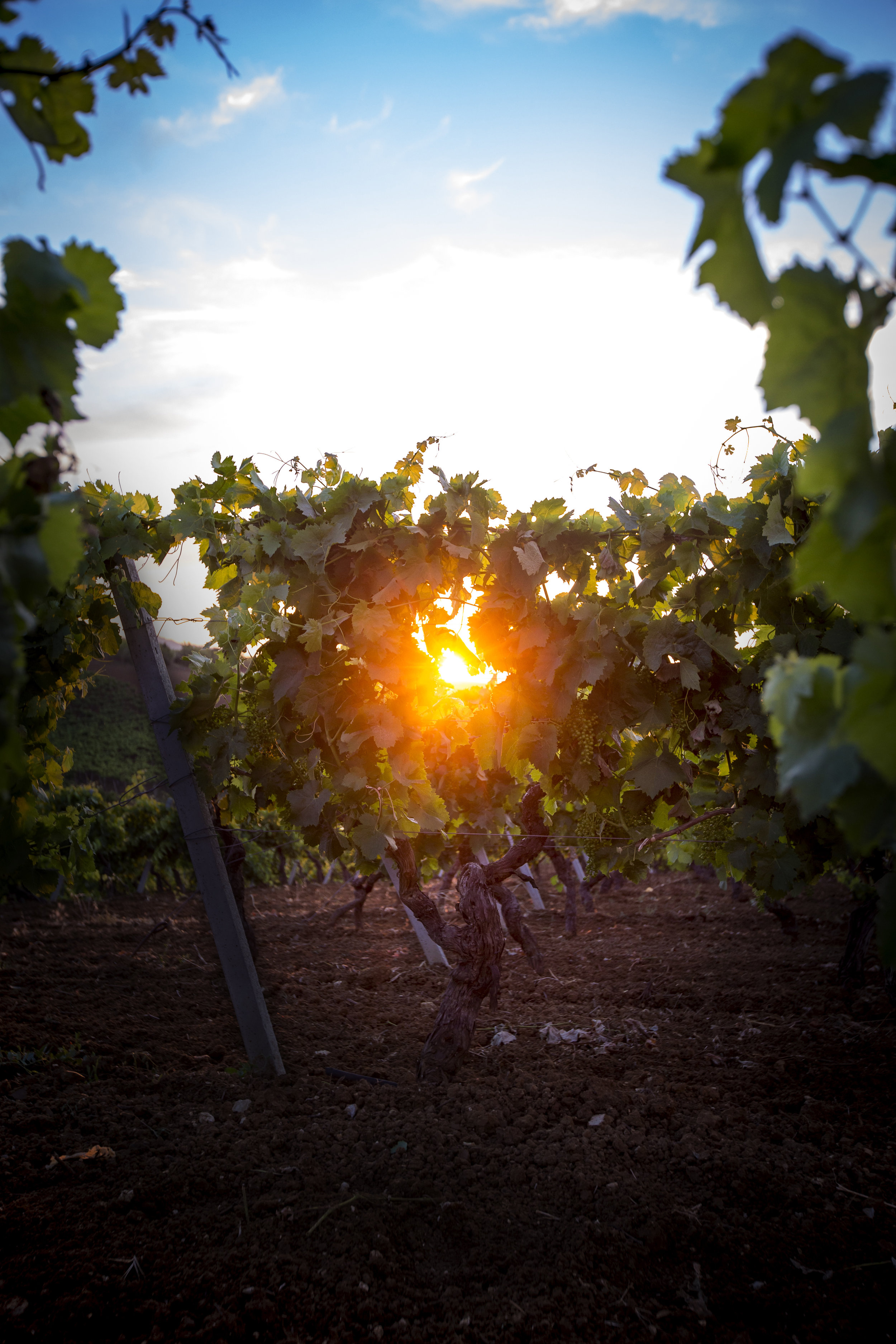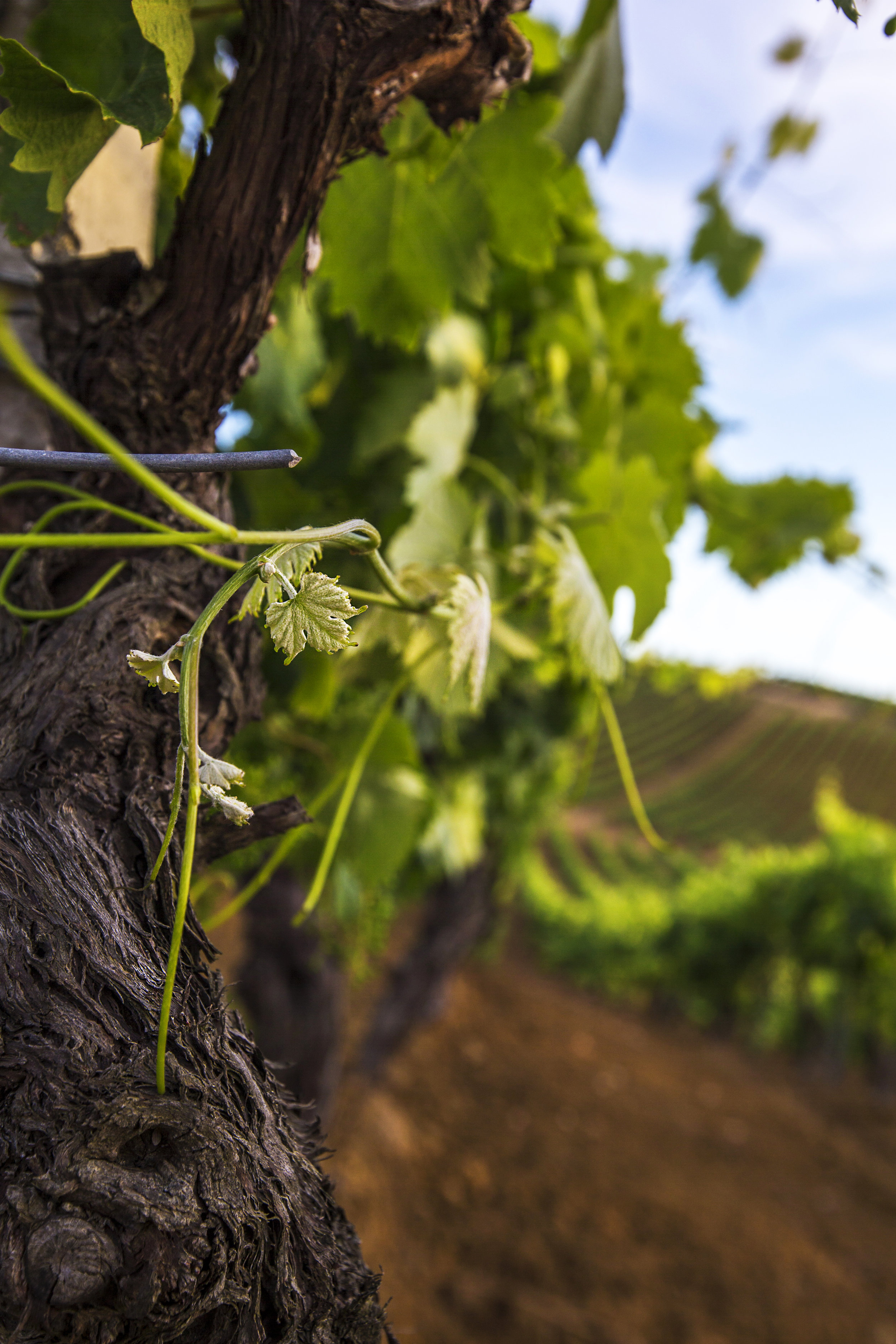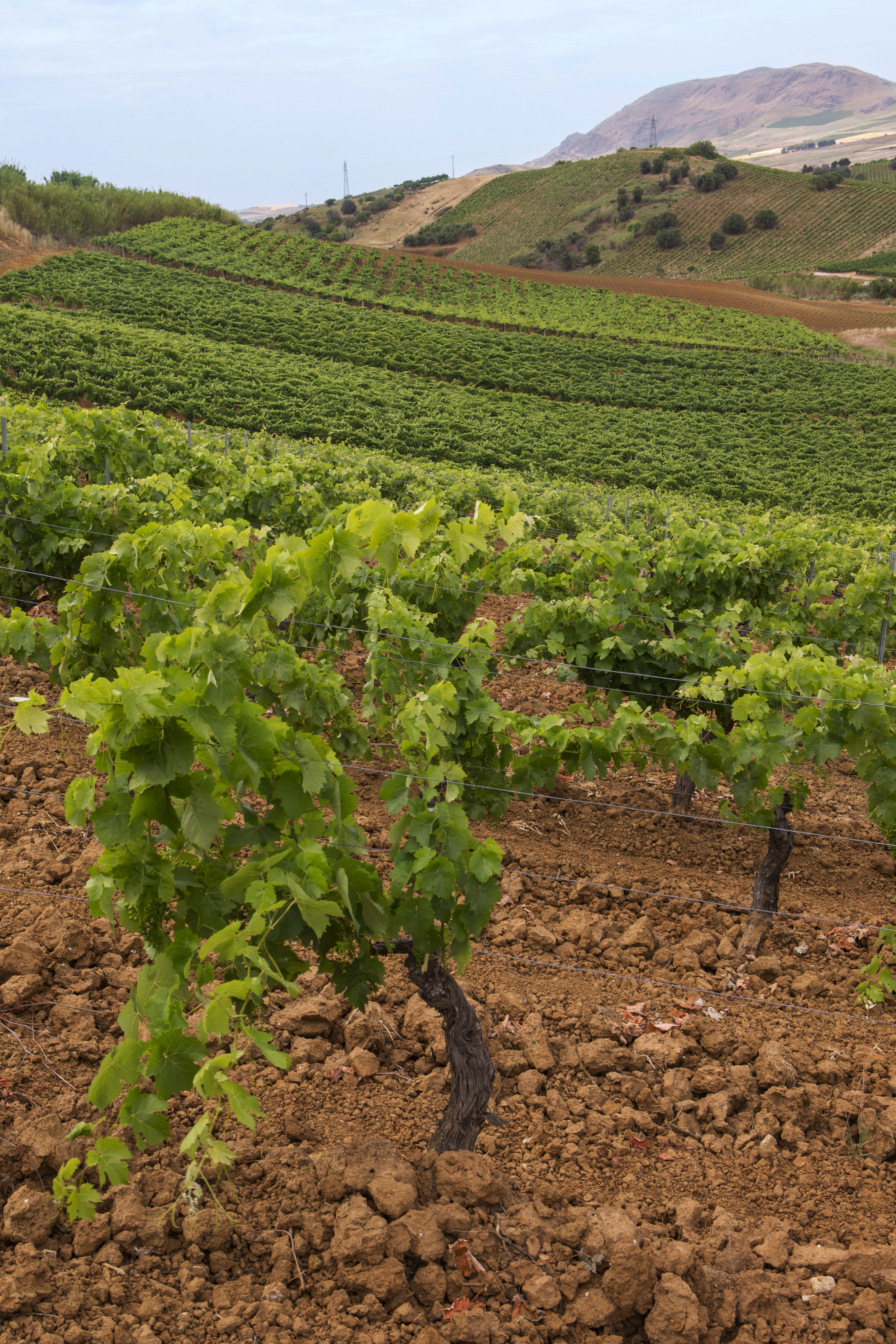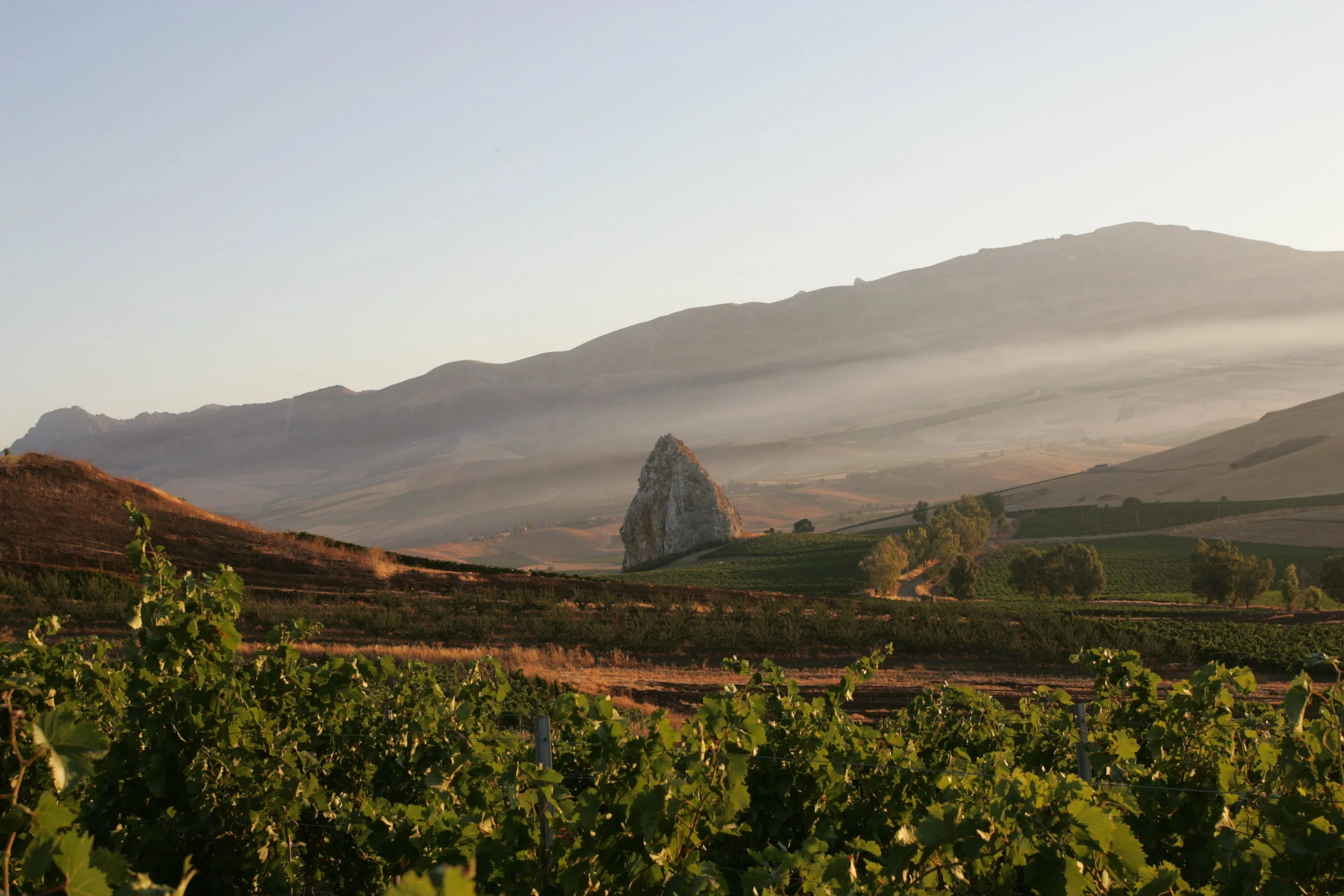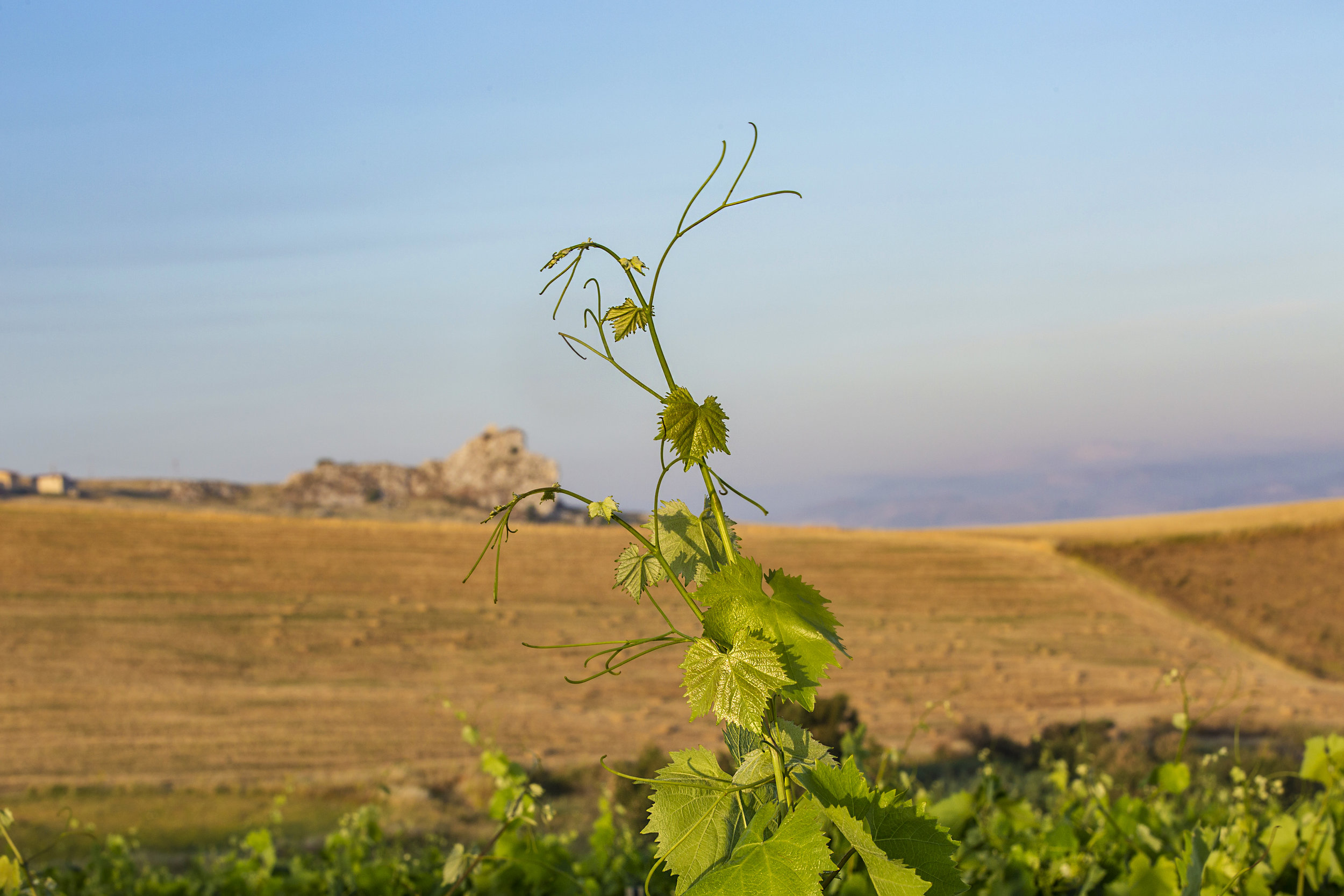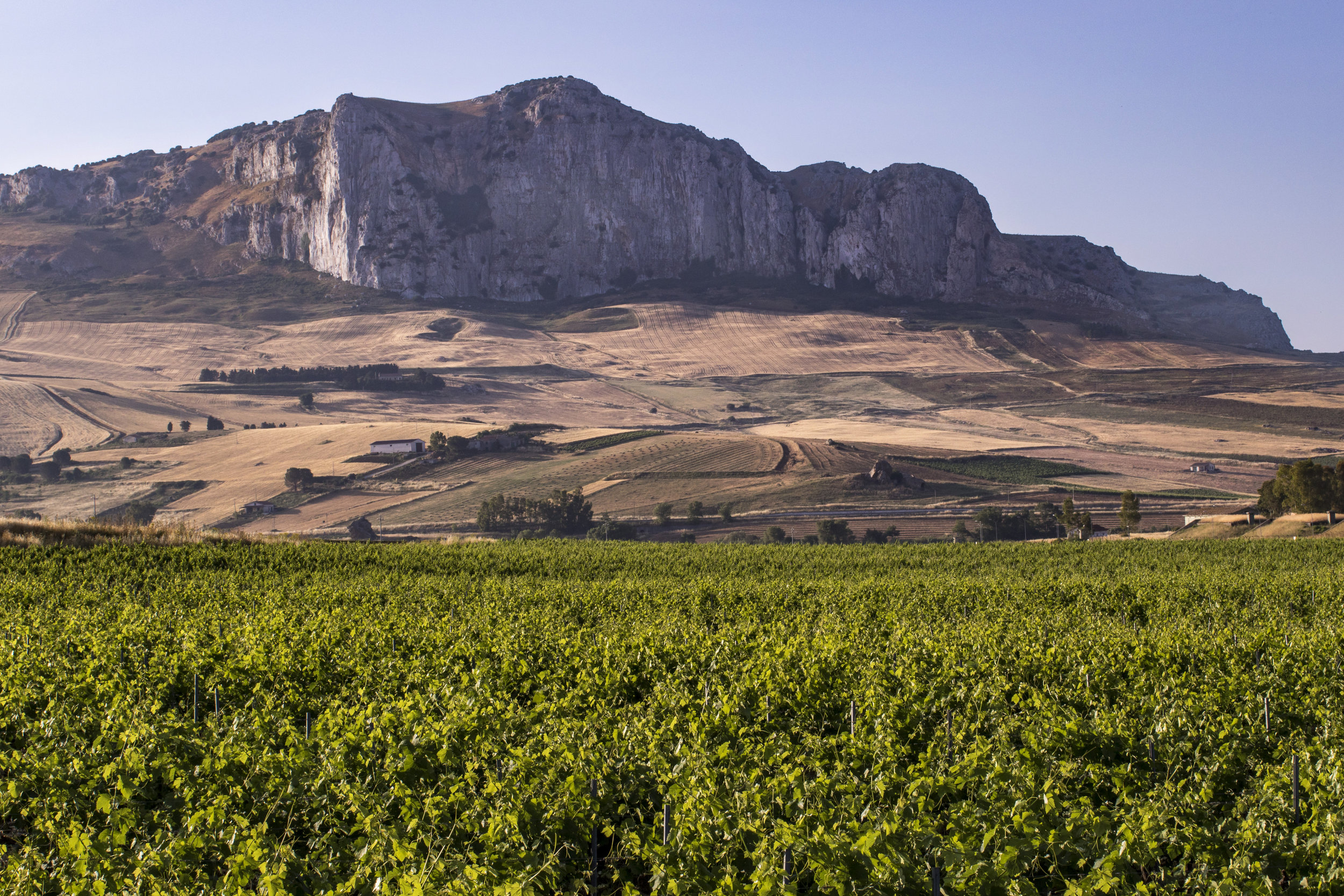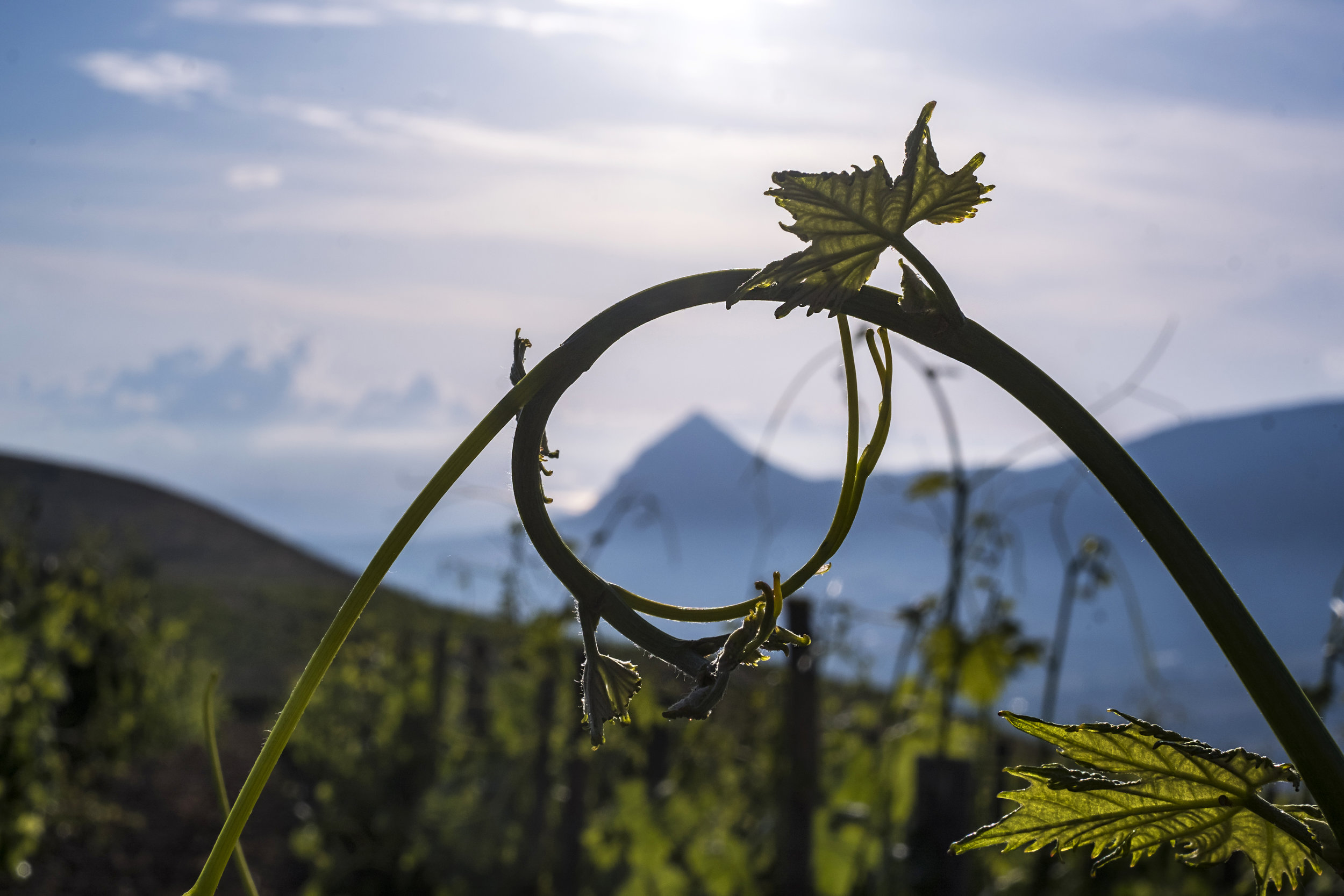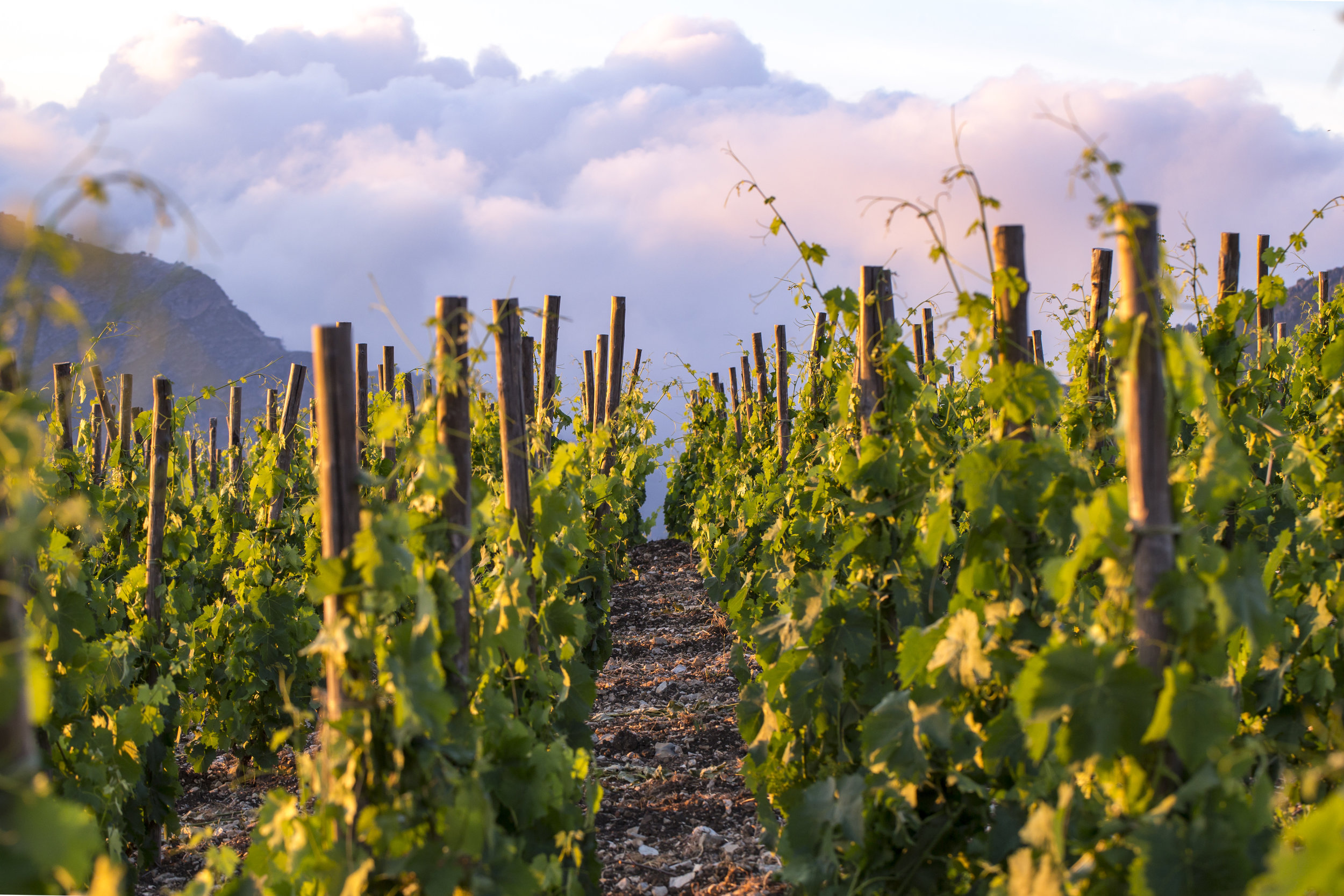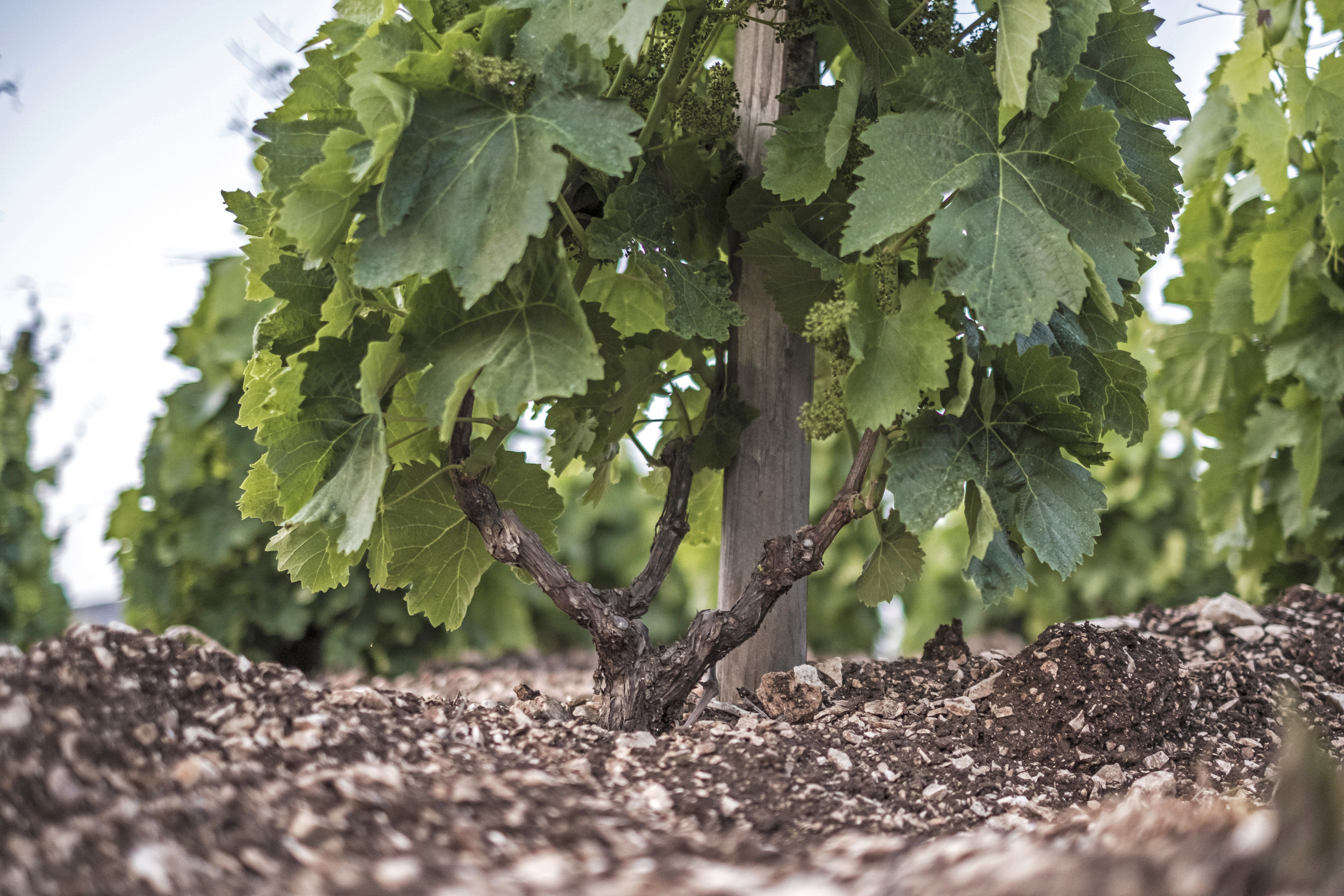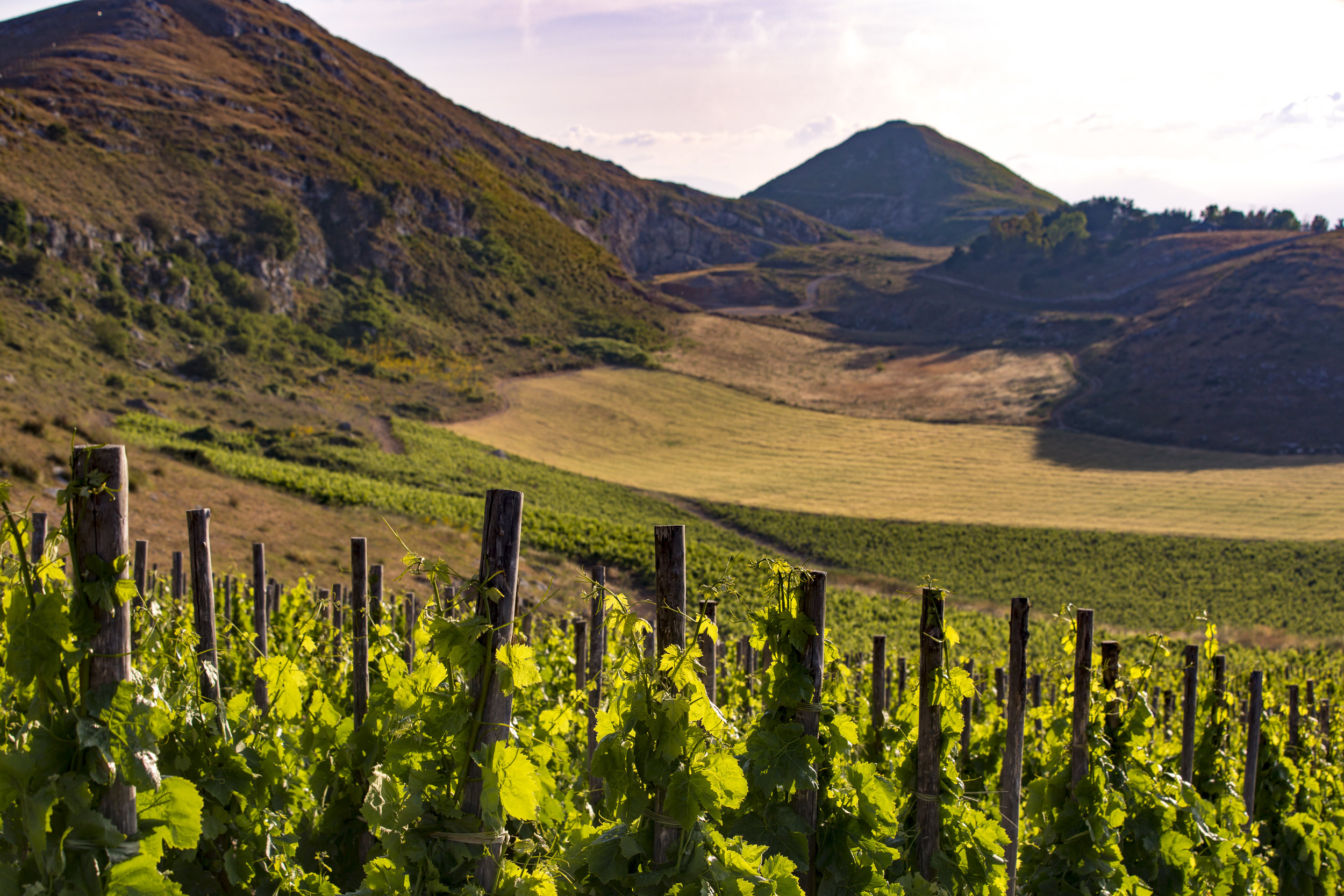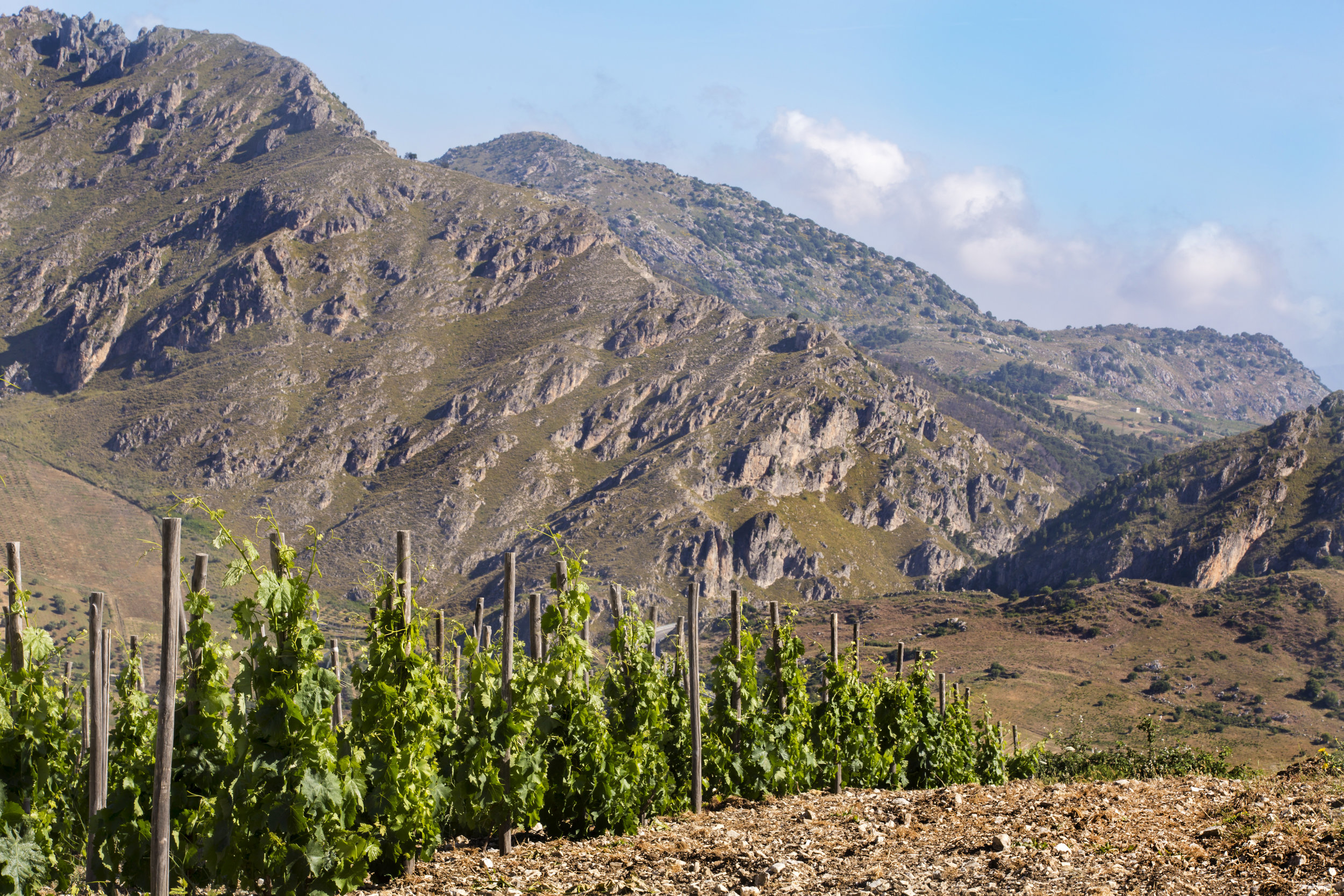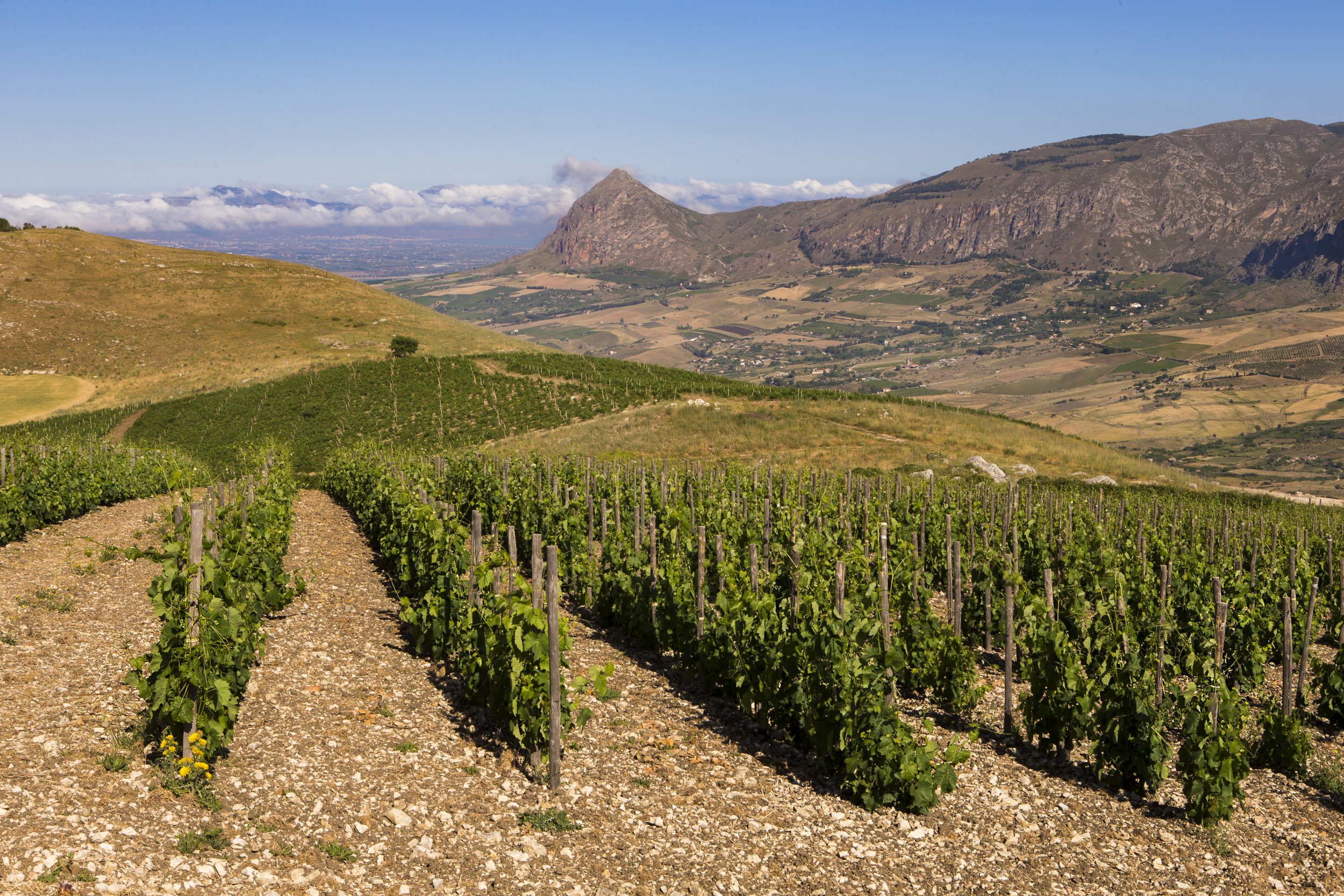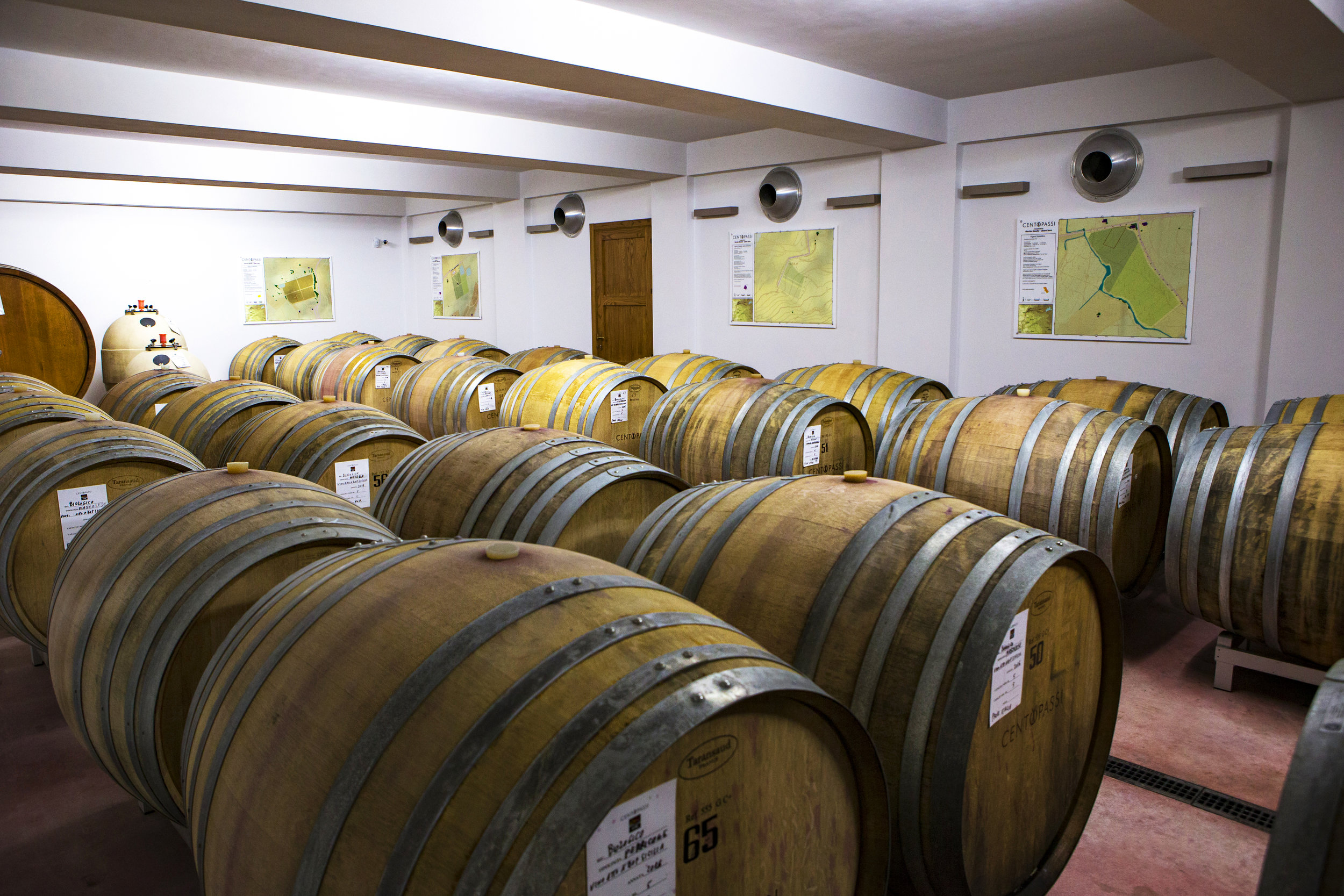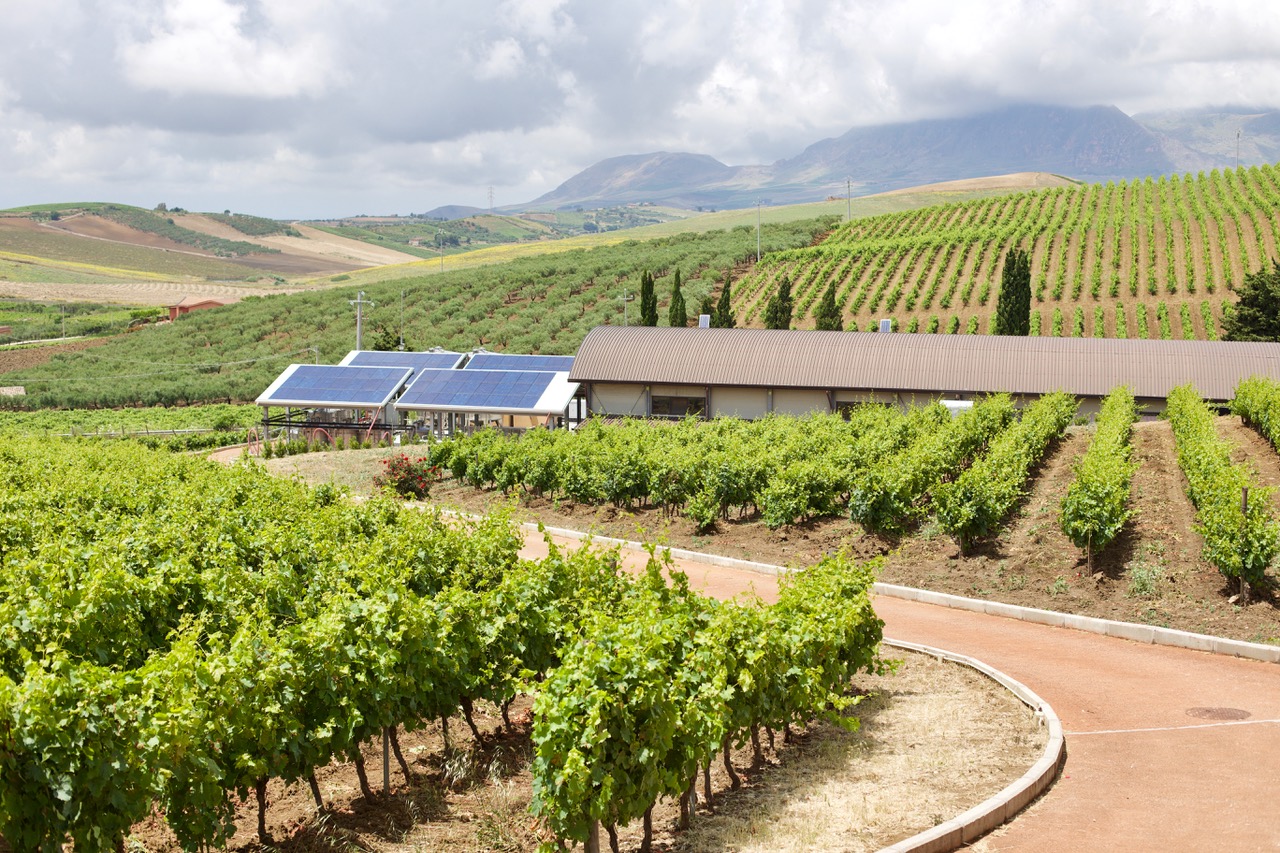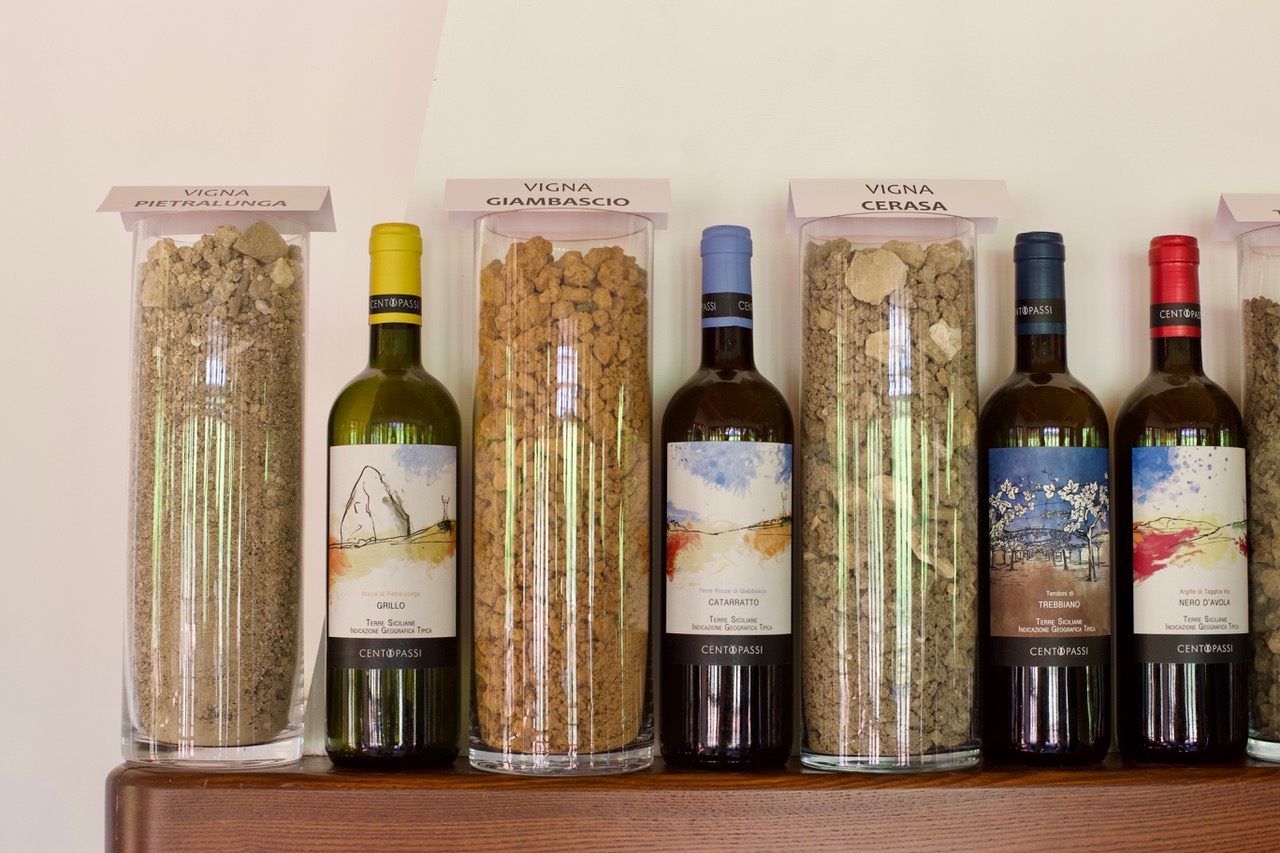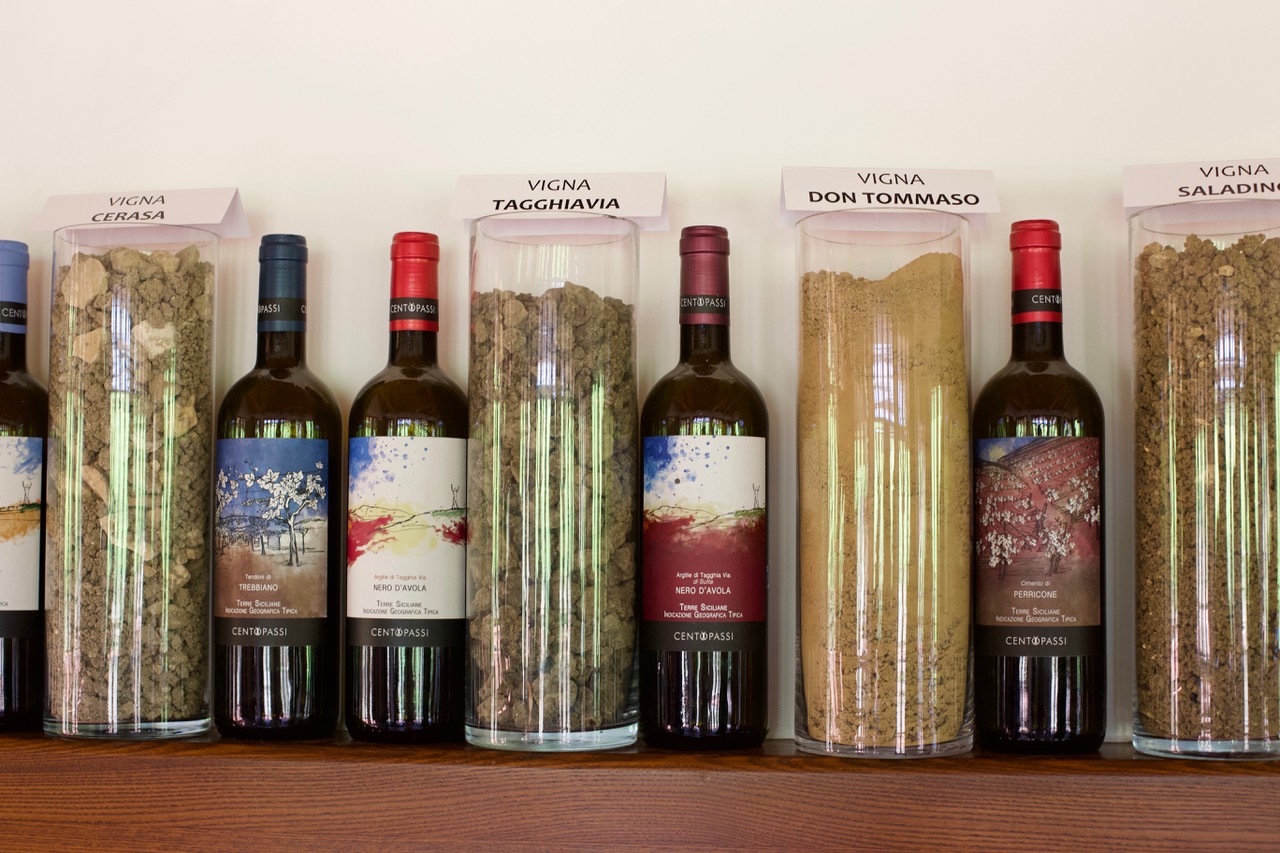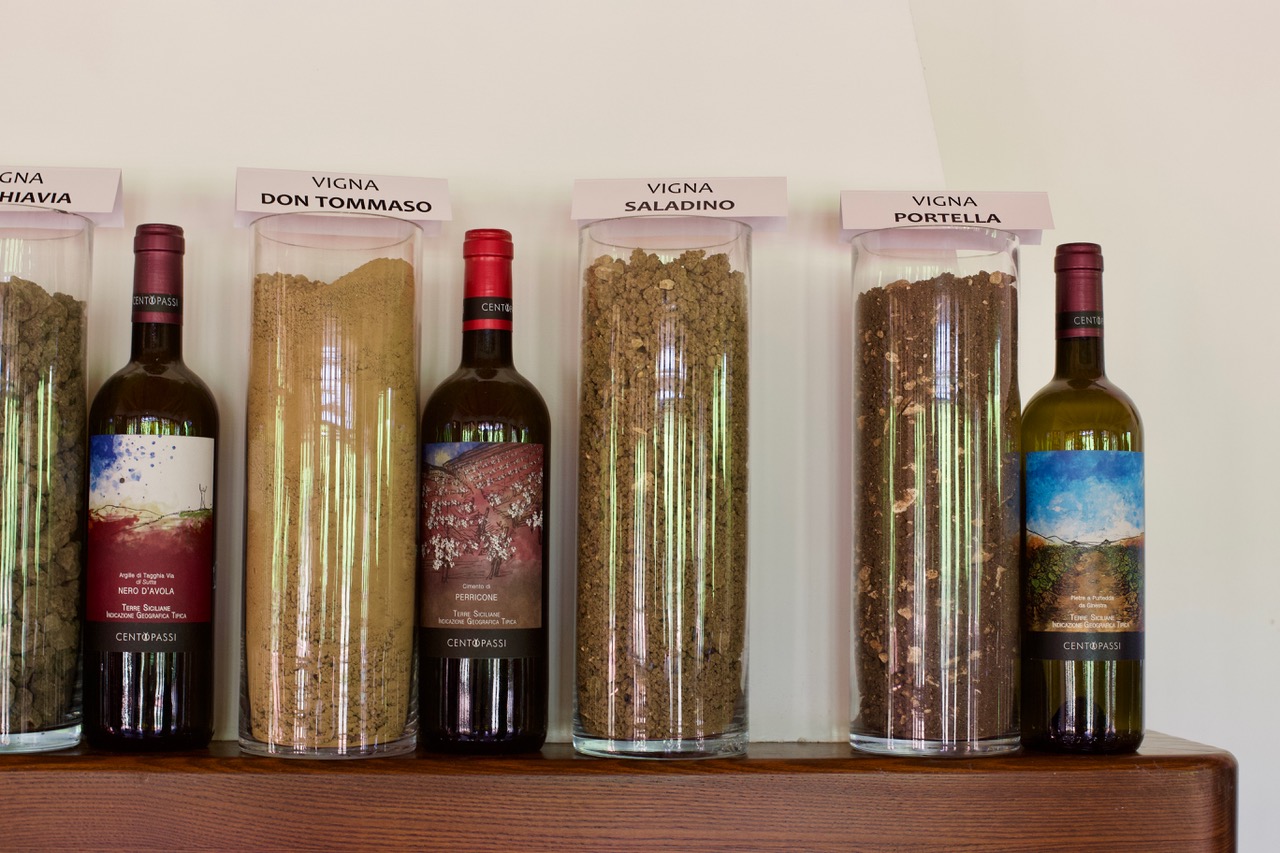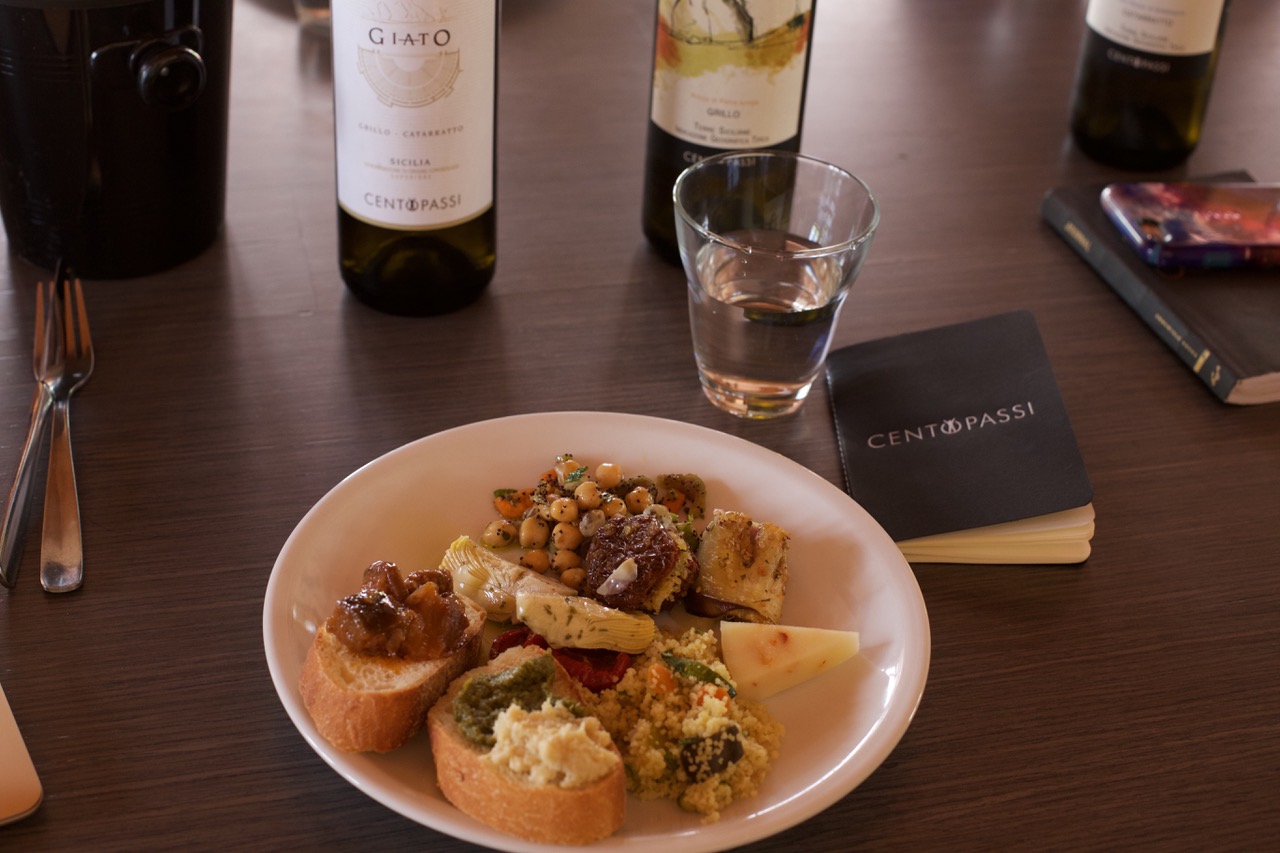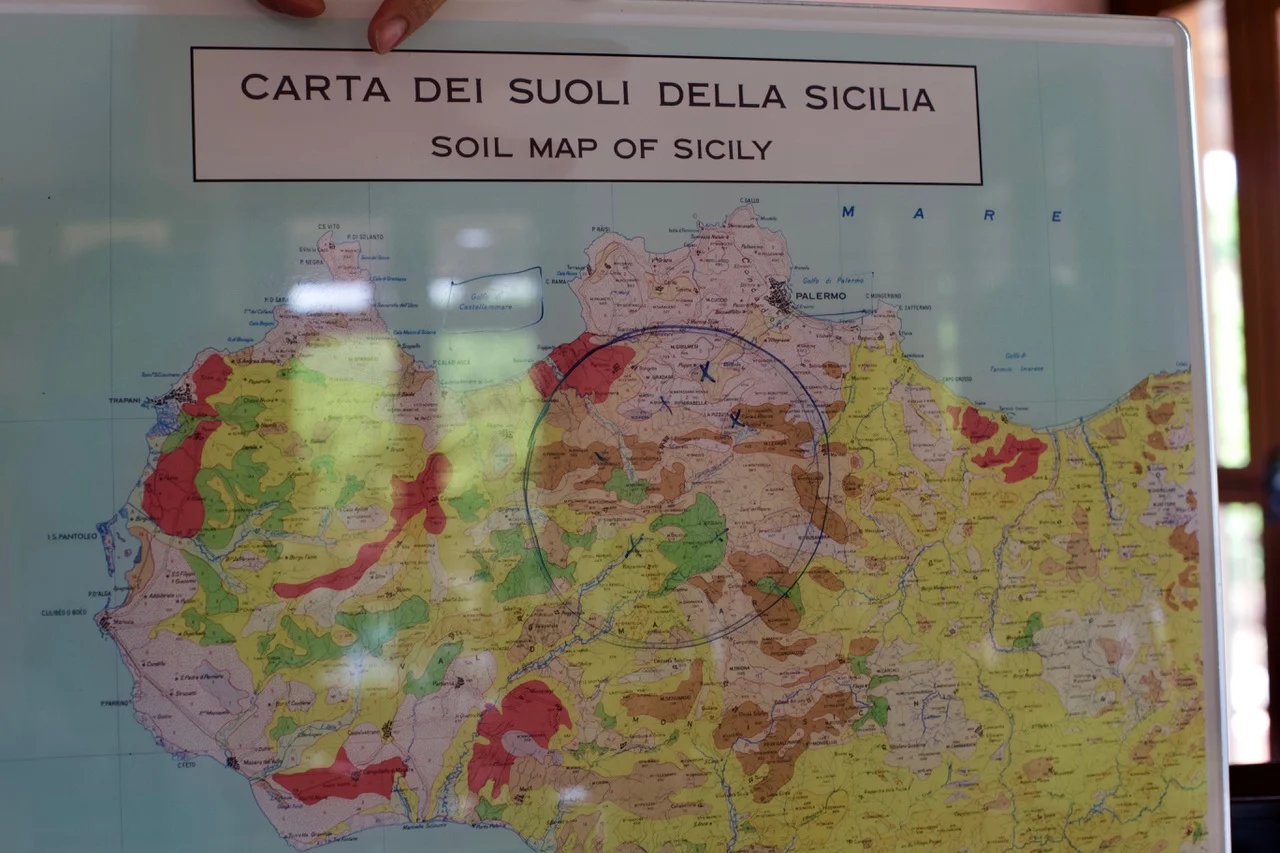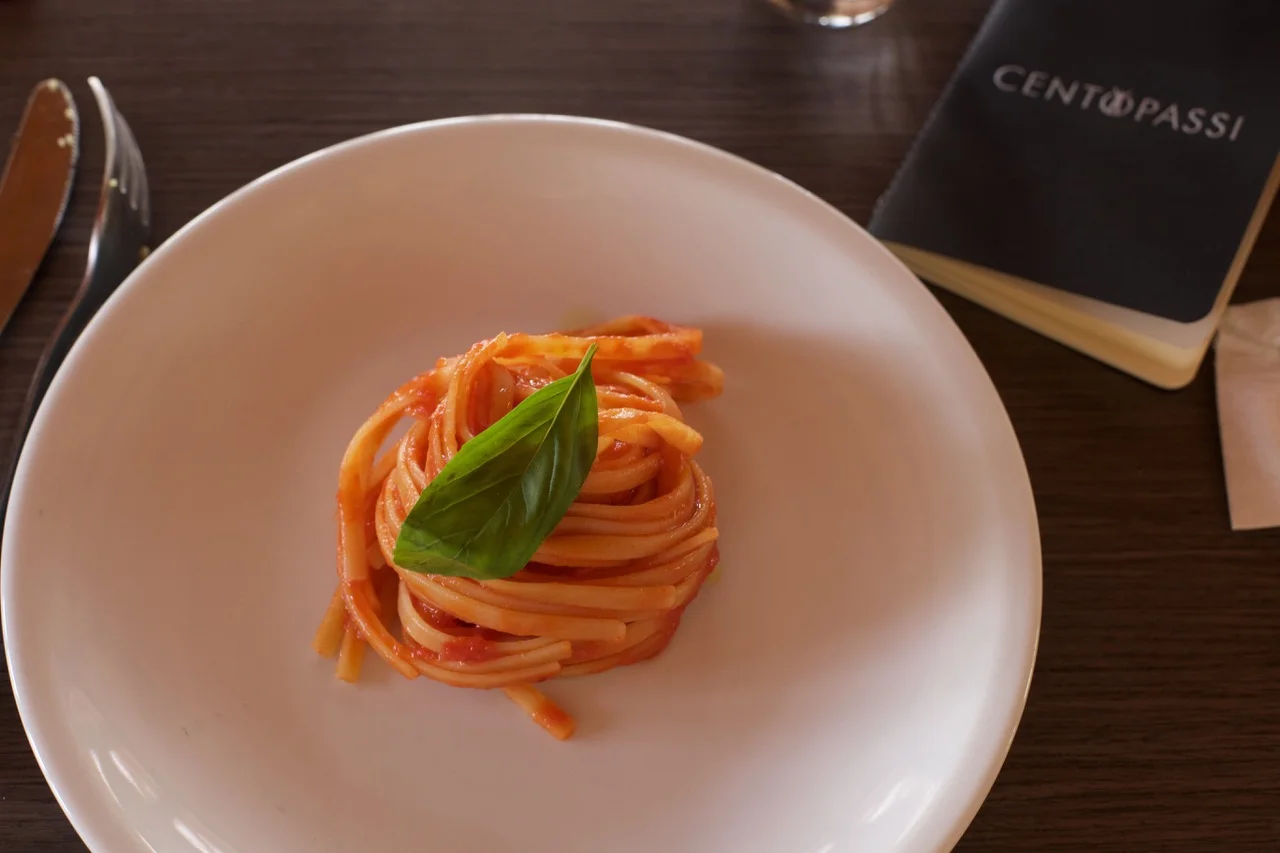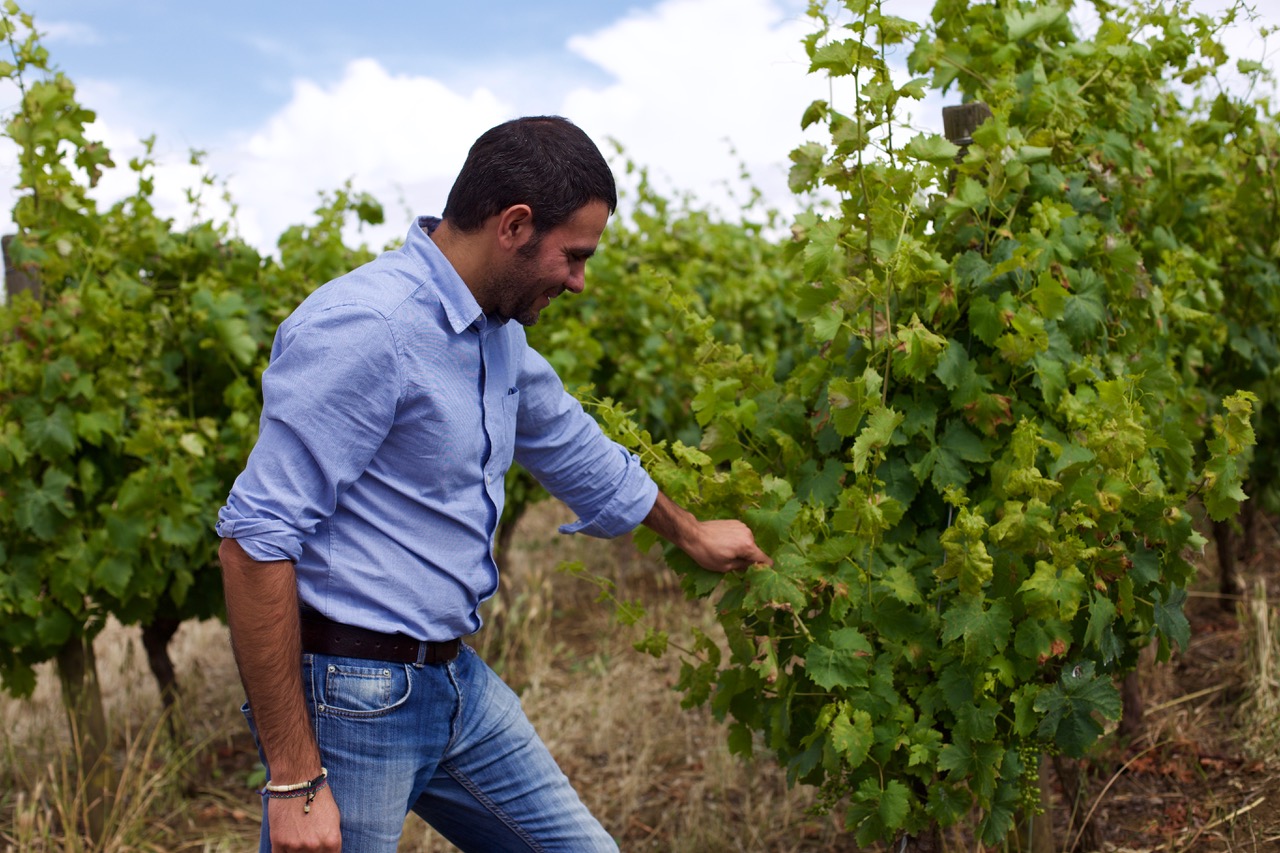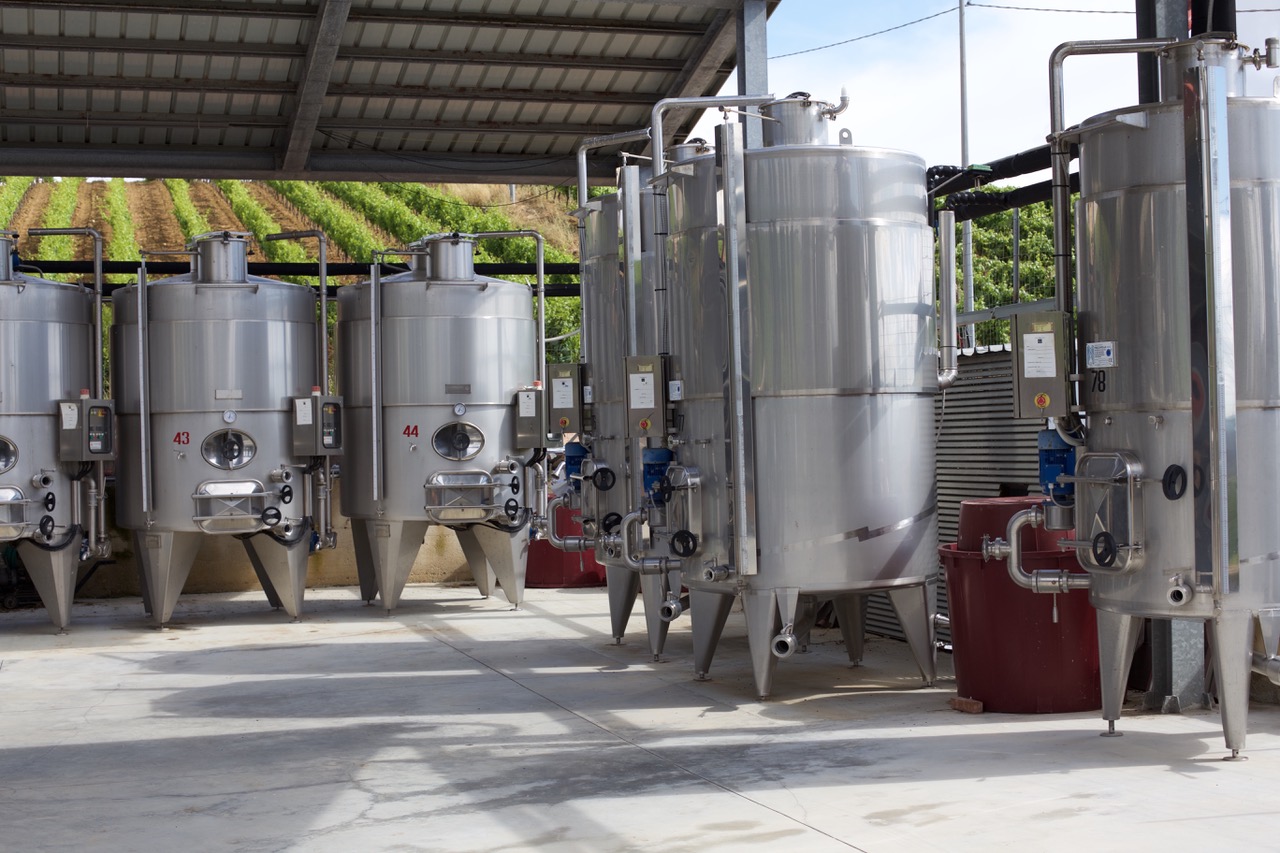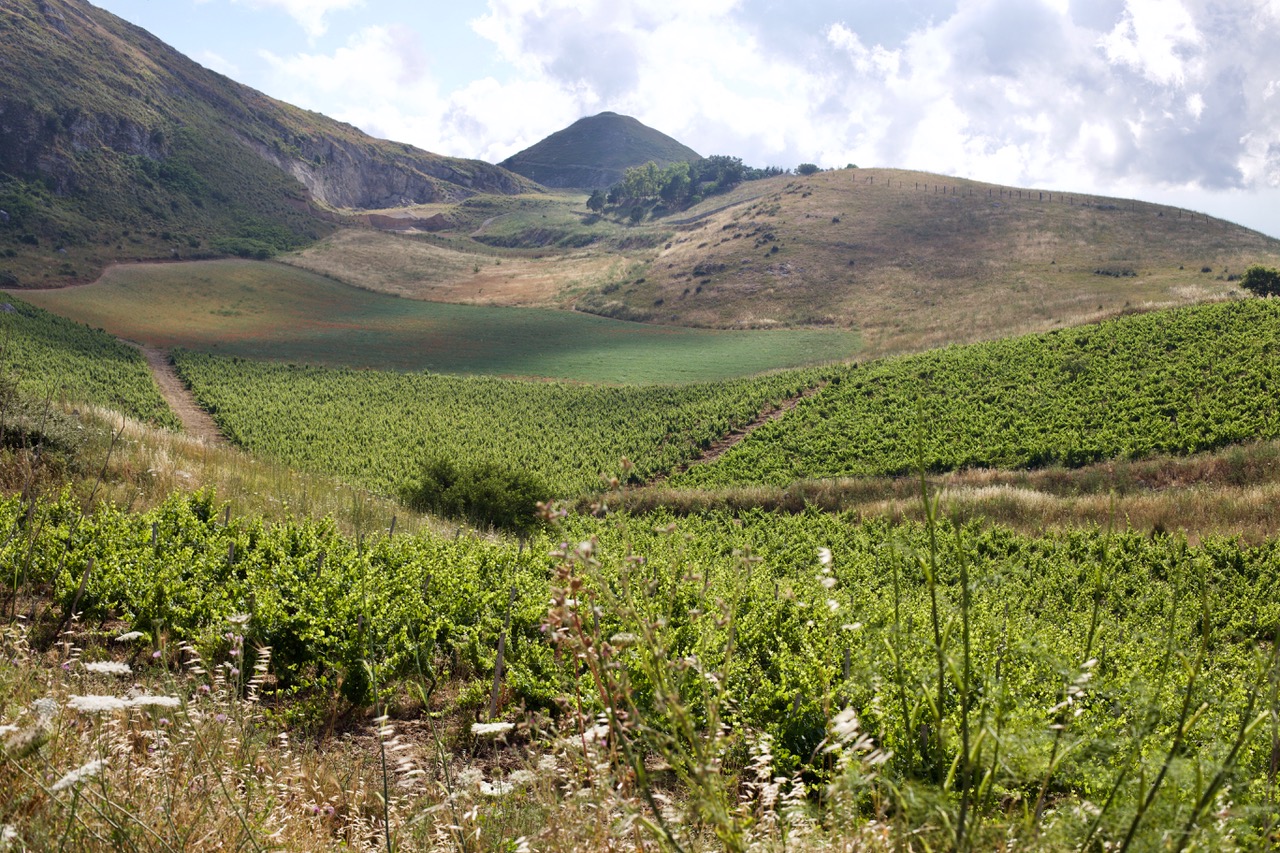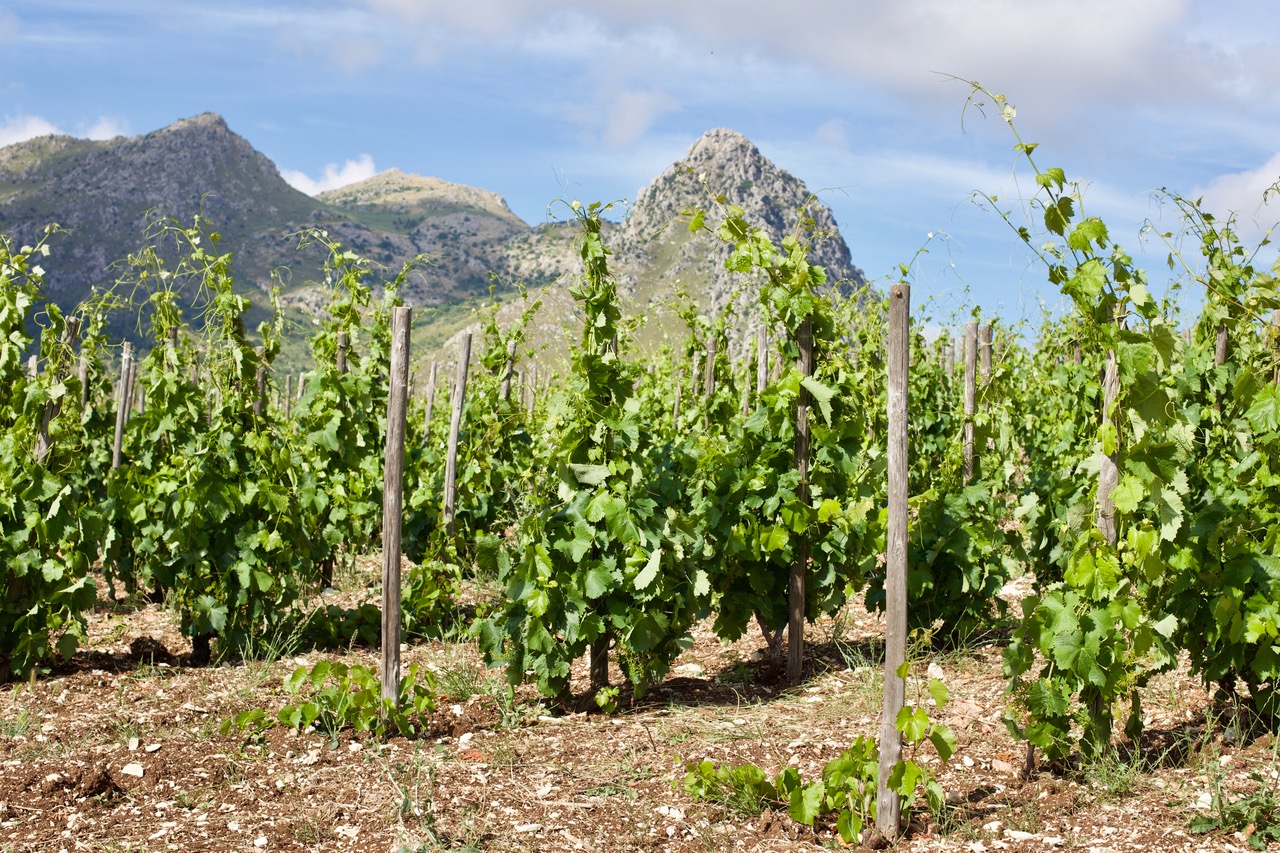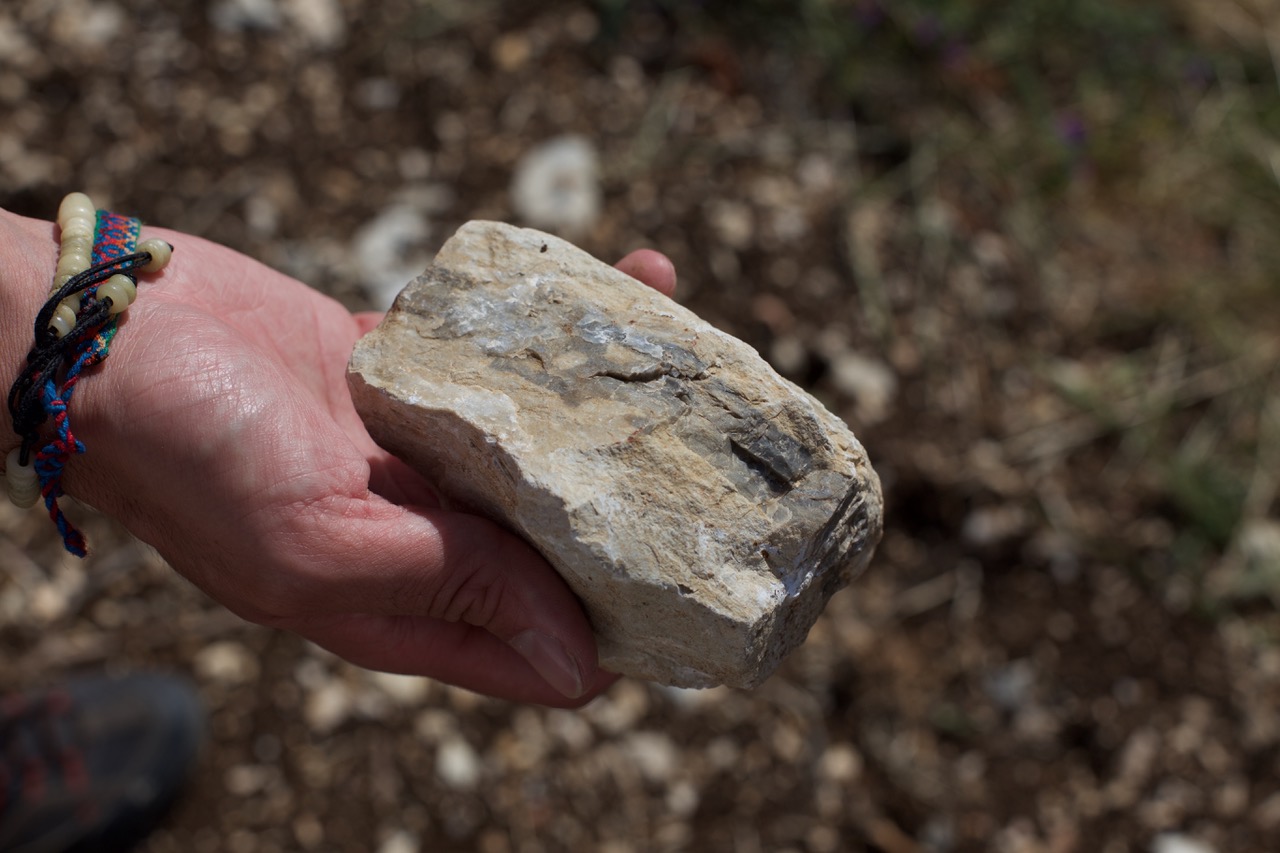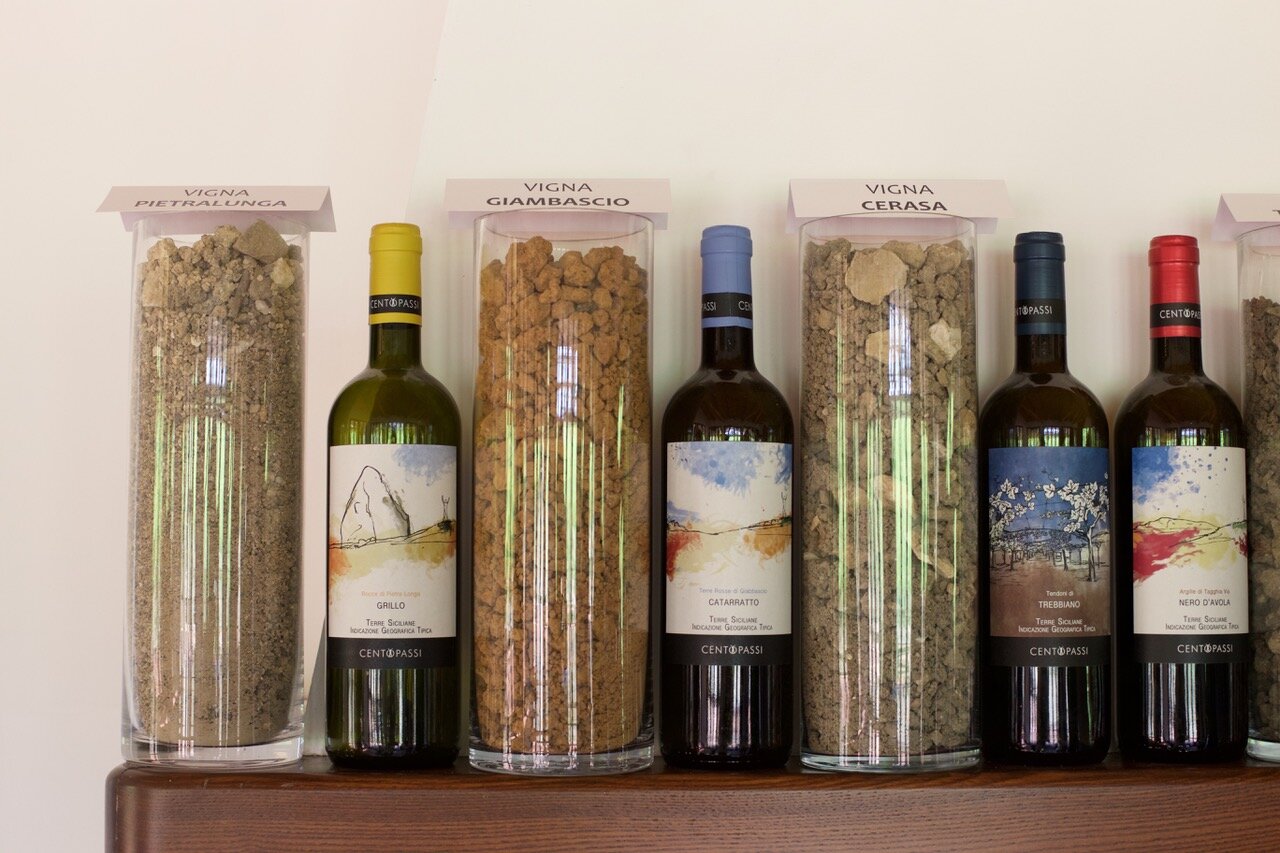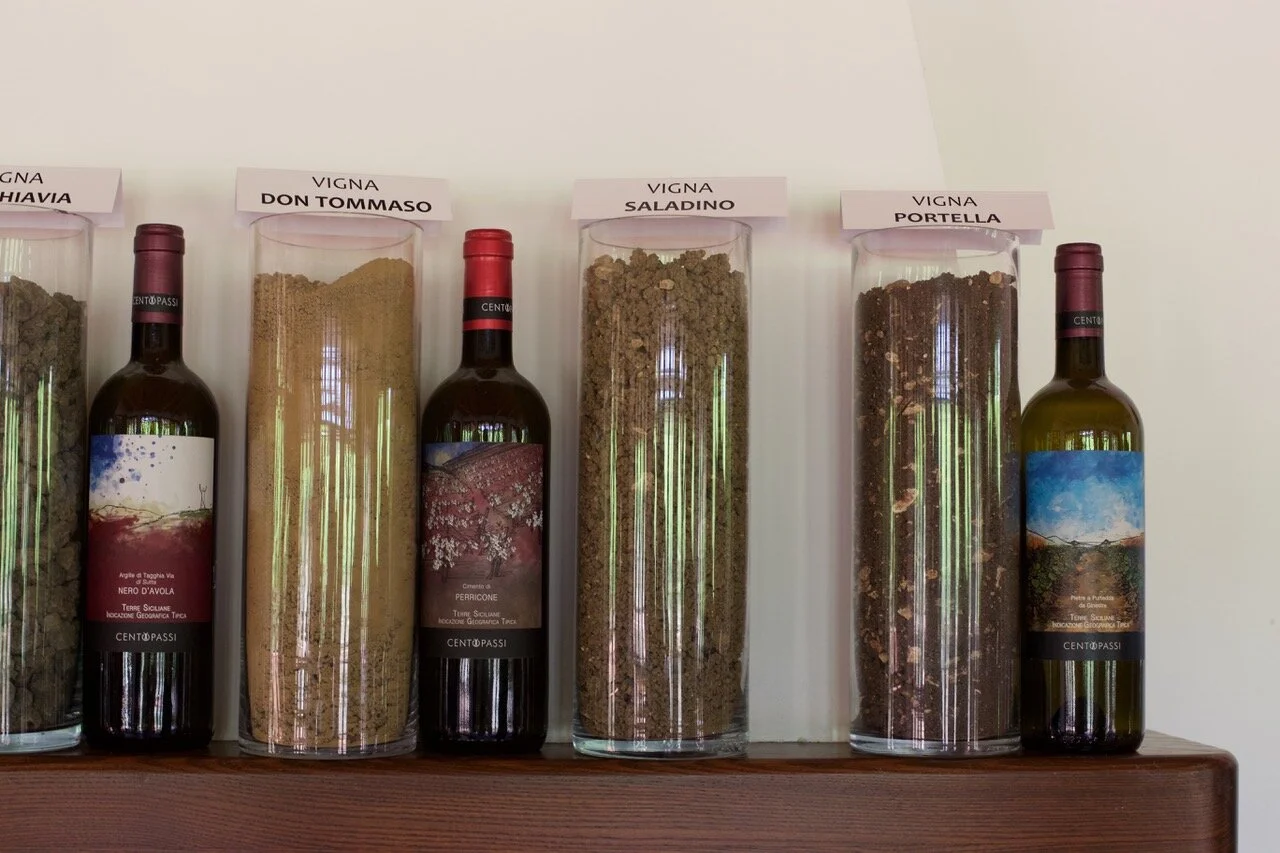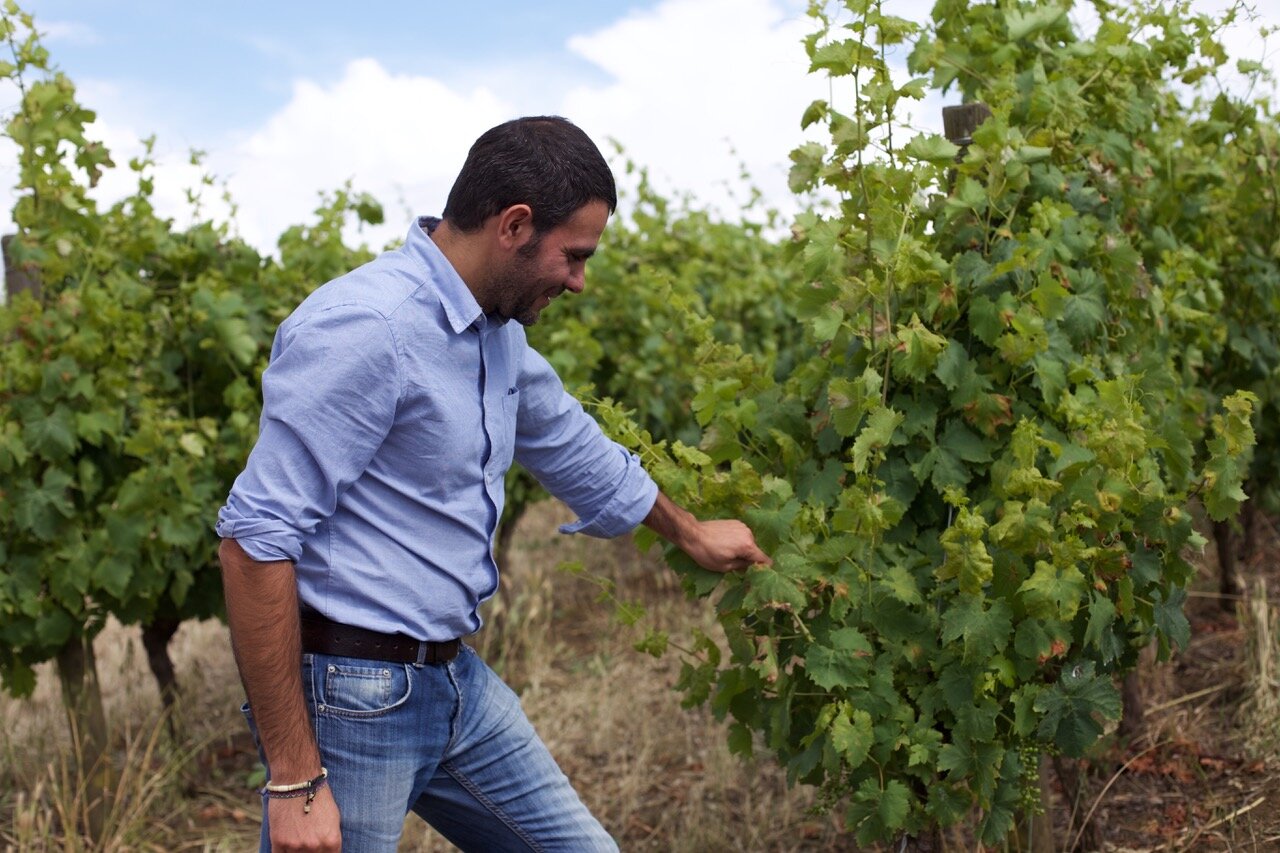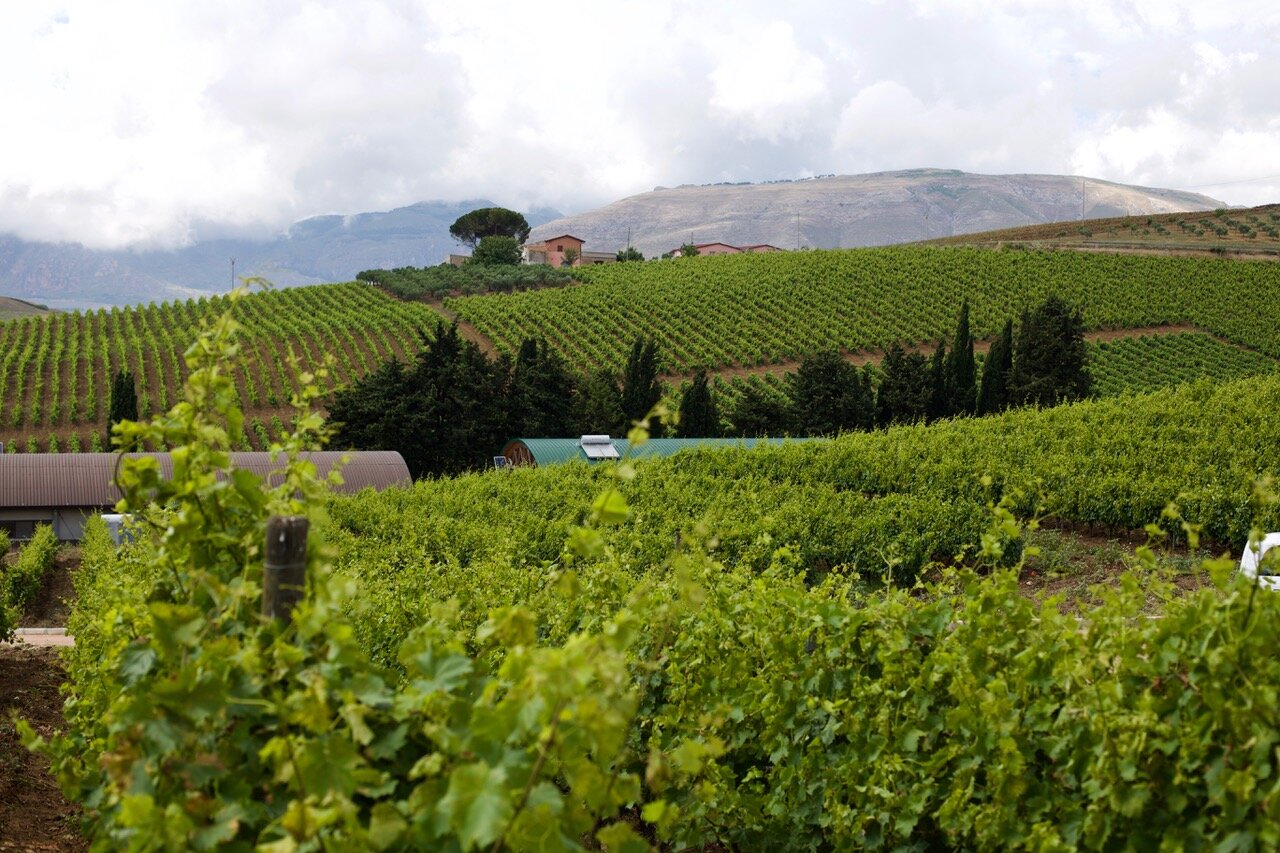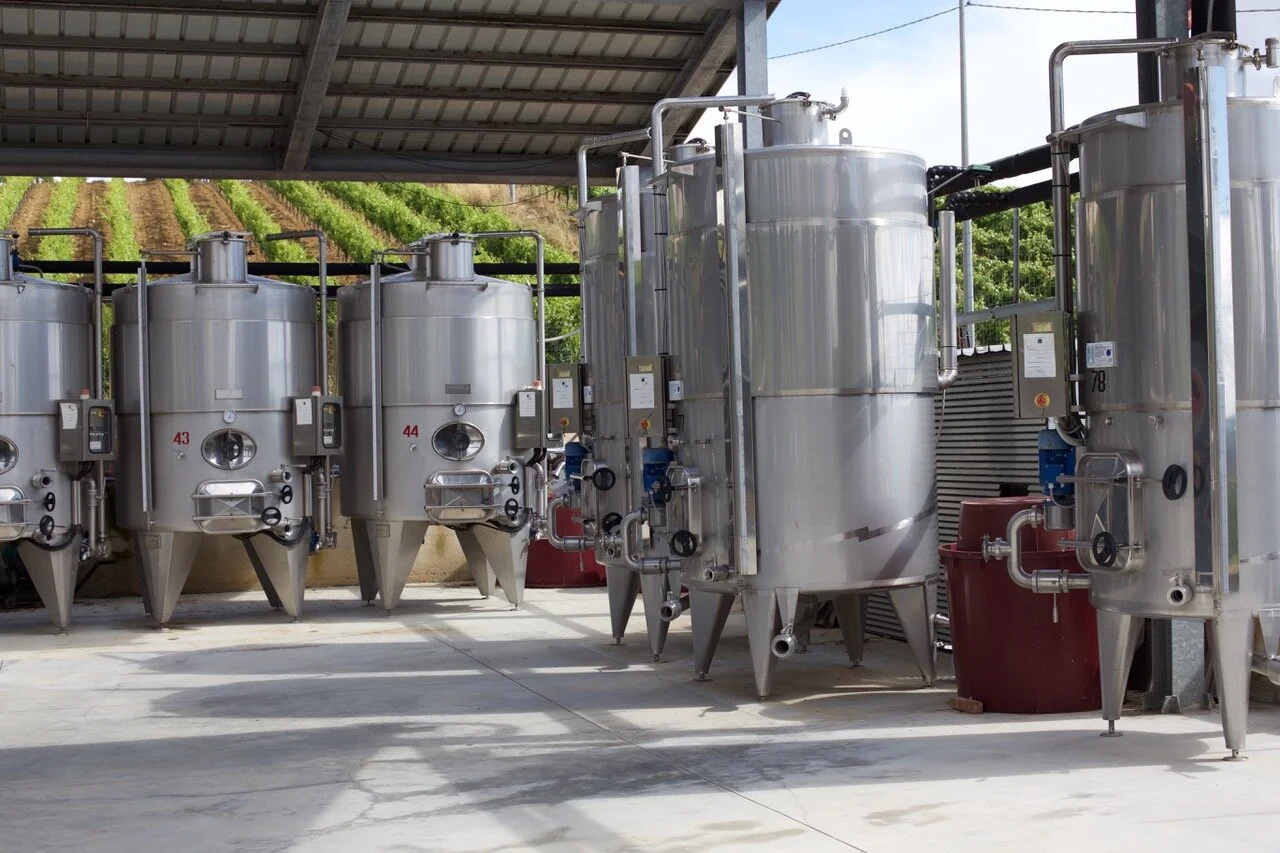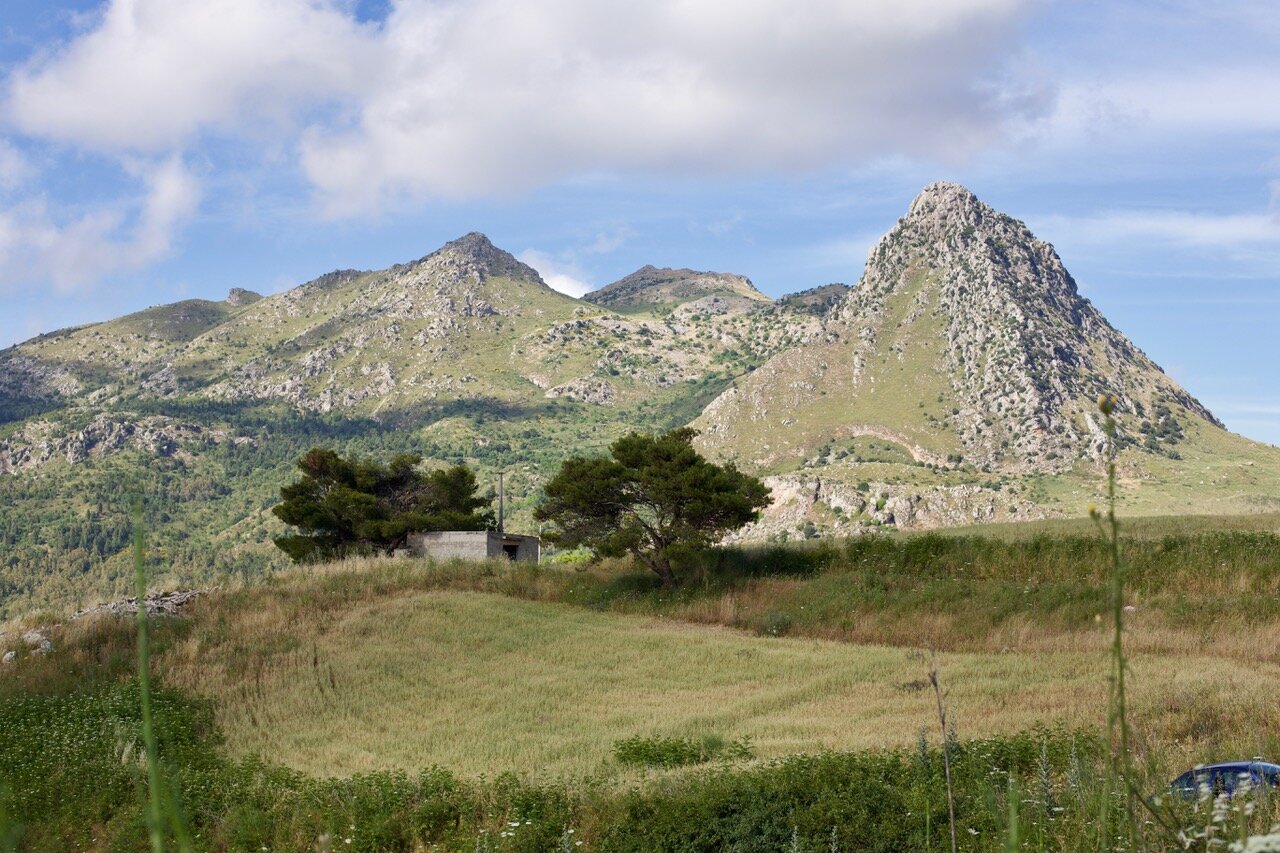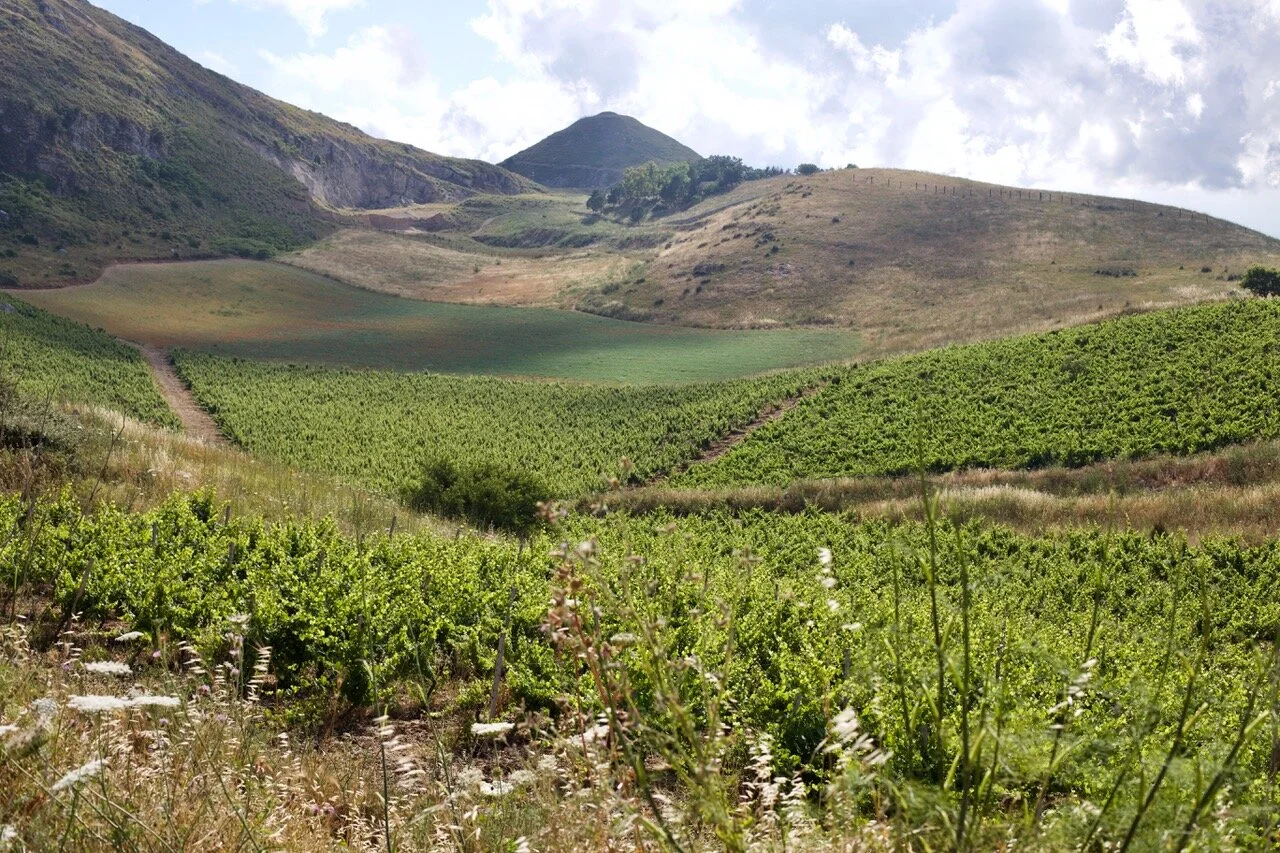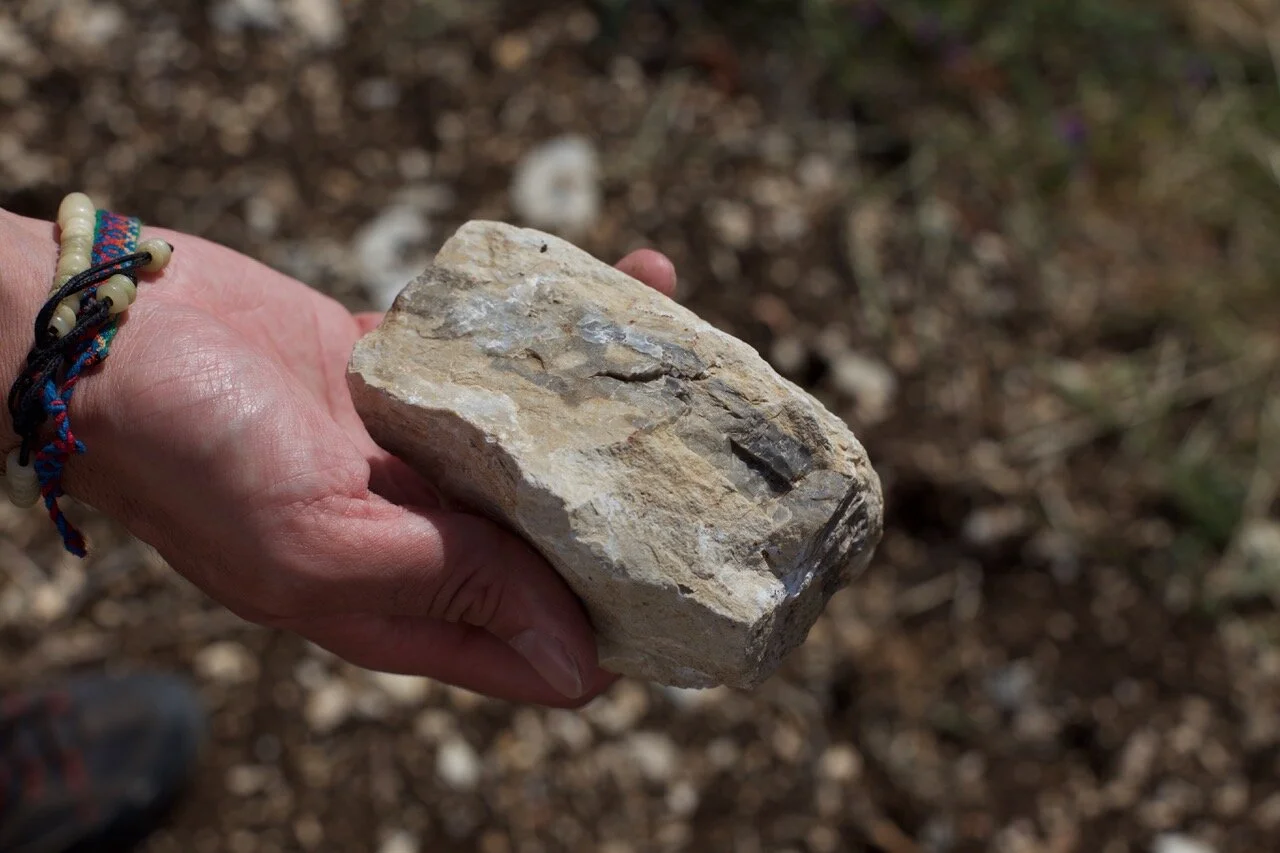Centopassi
_____________________________________________
All organic viticulture, certified and labeled
Libera Terra Co-op member, embodying the anti-Mafia movement
High elevation vineyards
_____________________________________________
About Centopassi:
Western Sicily grows a lot of OK wine, but the wines from Centopassi are different. They come from various vineyards in the high Belice Corleonese, a plateau at over 500 meters (1800 feet) above sea level, near the town of Corleone, south of Palermo. The soils are clay of various kinds, at an altitude that gives cool nights and fresh acidity at harvest; the vineyards are cultivated organically; the varieties are indigenous to Sicily, which is to say adapted to the conditions found here; the winemaking allows the native character of the fruit to shine and is not at all intrusive, and the results range from excellent everyday drinking (Giato Rosso and Bianco) to the best Sicilian single-vineyard wines I’ve had outside of Etna. The whites are particularly striking, vivid, and mouthwatering, but the whole range is consistently excellent.
That’s the vinous story, but there is another side to this estate. ‘I Cento Passi,’ the Hundred Steps, is an anti-Mafia film made in 2000, and Centopassi wines are grown in vineyards confiscated from convicted Mafiosi, some of them notorious (such as Salvatore ’Toto’ Riina). In other words, the mere existence of this estate is a renunciation of the Mafia, and of the terrible effect that the Mafia has had on the people of Sicily for generations. We are proud to support Centopassi and Libera Terra, the organization behind it.
Harvest at Centopassi normally takes place at the end of August through September, depending on the variety. Fermentation for the white wines is carried out with neutral selected yeasts, while indigenous yeasts are used for the reds.
_____________________________________________
THE WINES:
‘Giato’ Bianco, Sicilia DOC Superiore
‘Giato’ is the name of the area around the ancient Greek theatre on Mount Jato, and these first two wines are the everyday bottlings from Centopassi. They are both dry, very well made, and delicious, very different in style and quality from most of the commercial examples from this area.
The Giato Bianco is a blend of 60% Grillo and 40% Catarratto from the Giabbascio Pietralunga and Verzanica vineyards, planted on the Belice Corleonese plateau. These two grape varieties are widely grown in western Sicily and used to be mostly used to make Marsala. They make very good white wine too; this shows none of the vague soft character of bad commercial examples but is brisk, flavorful (hints of herbs, apple, and mandarin orange), and delicious. Shockingly good for the money.
‘Giato’ Rosso, Sicilia Doc
The Giato Rosso is 70% Nero d’Avola and 30% Perricone. This traditional blend of indigenous varieties is grown in the Taggia Via, Verzanica and Don Tommaso vineyards, all on the Belice Corleonese plateau. Fairly deep red with violet rim; smells and tastes like sour plums with a faint hint of rose-petal; very drinkable but also very fresh and properly dry (which a lot of commercial Nero d’Avola is not). Delicious red wine with pizza and all kind of substantial pasta dishes.
single vineyard WINES:
Catarratto ‘Terre Rose di Giabbascio’, Sicilia DOC
Aside from the Giato wines, we also work with 5 different single vineyard bottlings. The ‘Terre Rose di Giabbascio’ is 100% Catarratto, planted near San Giuseppe Jato. The Giabbascio vineyard contains free draining alkaline clay with sand, and is rich in iron oxides (hence the ‘red earth’ of the name).
The wine has a pale straw color with a greenish glint; lovely fresh inviting aroma, citrus (mandarin orange), herbs, wet stones, very expressive; somewhat reminiscent of Fiano. Same on palate, excellent acidity, palate-staining concentration, excellent white wine but particularly striking for Sicily. Age a few bottles of this if you have the self-control, otherwise outstanding drinking now with seafood or roast chicken.
Grillo ‘Rocce di Pietra Longa’, Sicilia DOC
The ‘Rocce di Pietra Longa’ is 100% Grillo from the Pietralunga vineyard, located near the town of Corleone. The vineyard can be recognized by a tall stone (the Pietra Lunga), about 100 feet high, nearby. Vines were planted in stony alkaline clay soil with many rocky outcroppings. Pale straw yellow color in the glass.
Gorgeous intense mouthwatering aromas of lemon, marzipan and wet stones. Outstanding lively fresh palate impression, by far the best example of the variety I’ve had. Very long, very concentrated. A delicious, mineral, serious white wine from an unexpected source. Maybe even age-worthy. This Grillo can stand with some of Italy’s best white wines.
Nero d’Avola ‘Argille di Tagghia Via,’ Sicilia Doc
‘Argille di Tagghia Via’ 100% Nero d’Avola, and takes its name from the church of the Madonna di Tagliavia, a few hundred yards away. The vineyard is planted between Corleone and San Giuseppe Jato. Soil is impermeable alkaline clay with some sand, poor in organic matter and limestone. Fairly dark violet-tinged red in the glass.
A berryish, spicy aroma (hint of black pepper); lead pencil; somewhat reminiscent of Syrah. Very concentrated palate and fresh acidity. Finish honestly tastes like blackberry, with a faint hint of coconut, a common Nero d’Avola note. A much better, fresher wine than most Nero d’Avola but still forward and drinkable. Try it with red meats, flavorful pasta dishes.
‘Cimento di Perricone’, Sicilia Doc
‘Cimento di Perricone’ is 100% Perricone from the Don Tomasi vineyard, planted near San Cipirello. Soil is impermeable clay with sand, alkaline, poor in limestone and organic material. The Perricone variety comes from north-western Sicily, where it was once planted widely; now it is relatively rare because it is hard to manage, but it can express the beauty of this soil like few others grapes.
The wine is deep purple in color, distinctive in aroma and flavor (berries, a hint of rose-petal), and shows striking earthy minerality.
‘Pietre a Purtedda da Ginestra’, Terre Siciliane IGT
‘Pietre a Purtedda da Ginestra’ is blend of 70% Nerello Mascalese and 30% Nocera. Both varieties typical of north-eastern Sicily, in the Portella della Ginestra vineyard, on the Belice Corleonese plateau. (The winery describes the vineyard as ‘a pile of stones at 1,000 meters in altitude.’) The soil type is known as ‘regosuolo’, a reddish-brown, calcareous soil that is stony and full of rocky outcroppings.
The blend here is the same as for Faro, a tiny appellation near Messina in north-eastern Sicily, but transplanted to the western end of the island. Very high altitude, very distinctive rocky soil, late harvest for the region and this distinctive blend of varieties make for a deep, complex red wine, the flagship of the estate.
_____________________________________________
more information:
An excellent article on Centopassi by Walter Speller
Vist the Centopassi website
Learn more about Libera Terra
